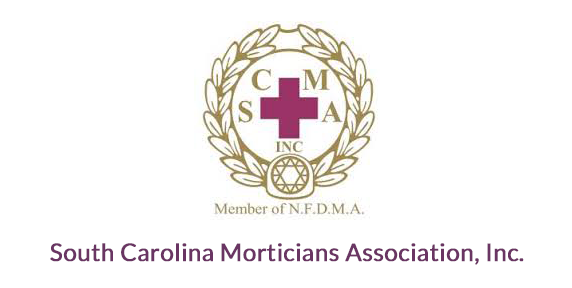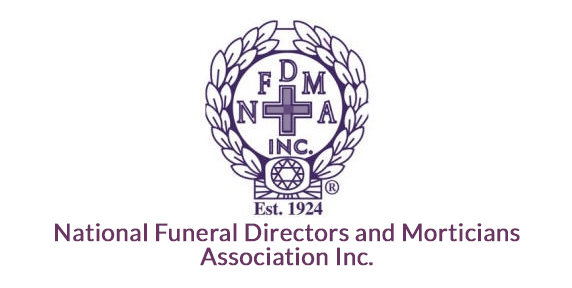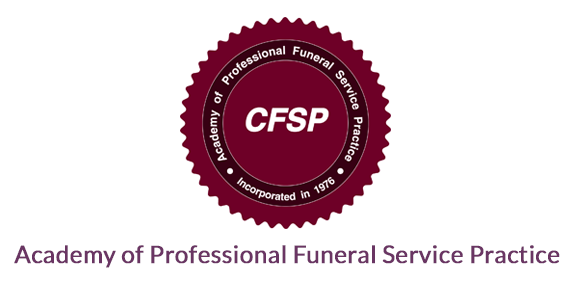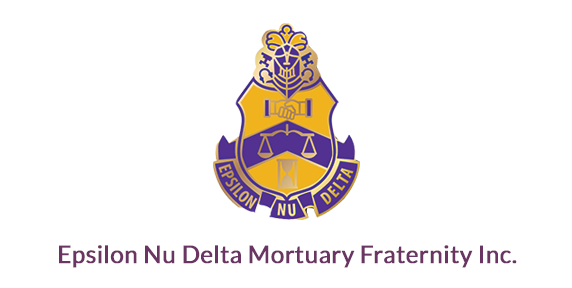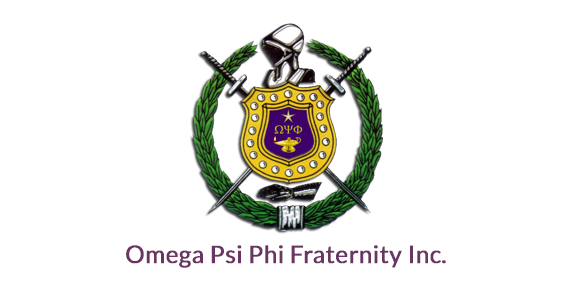Glossary
Glossary
- Alternative container: An unfinished wood box or other non-metal receptacle or enclosure, without ornamentation or a fixed interior lining, which is designed for the encasement of human remains. It may be made of fiberboard, pressed wood, composition materials (with or without an outside covering) or like materials.
- Arrangement Conference: A scheduled event at which the mortician or funeral director meets with interested parties to plan the disposition and related memorialization events, for a deceased person.
- Aspergillum: The devise which holds and is used to sprinkle Holy Water, by a Catholic or Orthodox priest.
- Casket bearers: In American culture, these are usually persons emotionally close to the family or deceased, who are selected to carry the casket as needed, usually to and from the funeral coach or other similar conveyance.
- Celebrant: In the Catholic Church, the priest that performs the mass.
- Certified Copies of a Death Certificate: Copies of the original death certificate as prepared and certified by the appropriate agency used for legal purposes and processing of survivor benefits.
- Columbarium: A structure consisting of small vaults or niches for urns containing cremated remains.
- Committal Service: The ceremony at the grave-site following a funeral ceremony or gathering in a church, chapel or other location.
- Concelebrants: In the Catholic Church, the priests that performs the mass, when there are more than one.
- Cremains: That which remains following cremation and processing.
- Cremation authorization: The legal document signed by the deceased or their next of kin, as well as appropriate legal authorities permitting the cremation to proceed.
- Cremated remains: That which remains following cremation and processing.
- Cremation: The process by which a dead human body is reduced, by intense heat and evaporation, to its non-combustible elements.
- Crematory: A building or facility that holds the equipment necessary for cremation.
- Cremation casket: A special casket designed to be used when the final disposition of the remains is cremation. The casket may be used for visitation and or the funeral ceremony, and it is cremated with the decedent. The distinction is that it is almost entirely combustible.
- Crypt: A space within a mausoleum designed for the permanent resting place of a casketed human remains.
- DD-214: The document specifying a veteran's enlistment record and discharge from the U.S... military.
- Death certificate: The legal document, filed with the appropriate agency documenting a human death.
- Disinterment: The legal process whereby a human remains may be removed from one place of final disposition in favor of another location.
- Entombment: The interment of human remains in an above-ground crypt or mausoleum.
- Disposition: The final resting place of a dead human body.
- Disposition permit: The legal document permitting the final disposition of a dead human body.
- Funeral: A ceremony in a church, chapel or other location with the deceased present.
- Mass: A religious service, held in a Catholic Church which includes: the sacrament of the Eucharist, prayers and other blessings for the disposition the dead.
- Funeral Coach: A conveyance specifically designed for the transportation of a casketed dead human body.
- Funeral Director: A person licensed by a state to prepare dead human bodies for disposition and arrange for, co-ordinate and supervise memorialization events. In some jurisdictions, this designation may not permit the preparation of the body.
- Gathering: A scheduled informal memorialization event, without the visible body present, designed for the honoring and remembering of the deceased. Similar informal events with the cremated remains present are also considered Gatherings.
- Hearse: A conveyance specifically designed for the transportation of a casketed dead human body.
- Honorary bearers: Persons who are designated for their close relationship to the family or deceased. Sometimes they are persons who, because of health or inability to attend, were not selected as casket bearers.
- Interment: The placing of remains into their earth as a final resting place.
- Internment: The placing of an urn containing cremated remains into a columbarium niche.
- Lawn Crypt: A subsurface concrete structure constructed in multiple units for the interment of human remains. Lawn crypts may be constructed with more than one tier or level.
- Mausoleum: A public or private building specially designed to receive entombments in crypts and niches.
- Memorial: A monetary contribution made in memory of the deceased.
- Memorial: Any item, other than a mausoleum or columbarium, used for identifying an interment space or for commemoration of the life of a decedent, including, but not limited to, a monument, marker, niche plate, urn garden plaque, crypt plate, cenotaph, marker bench and vase.
- Memorialization event: Any scheduled event for the purpose of the disposition or honoring of the deceased
- Memorial service: A ceremony in a church, chapel or other location with remains present or without the deceased present.
- Memorial folder: A printed keepsake that contains the name of the deceased that may also contain: poetry, scripture or other inspirational material, information regarding the service and the complete or edited version of the obituary.
- Memorial Mass: A religious service, held in a Catholic Church that includes: the sacrament of the Eucharist, prayers and other blessings for the disposition the dead, with remains or no physical body present.
- Memory Board: A collage of pictures assembled for display at a Memorialization event.
- Mortician: A person licensed by a state to prepare dead human bodies for disposition and arrange for, co-ordinate and supervise Memorialization events.
- Niche: A compartment or cubicle for the Memorialization and permanent placement of cremated remains.
- Officiant: The person, usually a member of the clergy, who performs and orchestrates a Memorialization event.
- Outer Burial Container: Any container which is designed for placement in the grave around the casket including, but not limited to, containers commonly known as burial vaults, grave boxes and grave liners.
- Pall: A large piece of cloth, usually ornamented with designs, which drapes the casket. It is usually associated with Catholic services, but might be used at a service in an Episcopal, Lutheran or other church.
- Pallbearers: The honored persons selected to carry the pall (usually at arm's length above their heads) as the casket is carried beneath by the under bearers. This term is frequently ( and inaccurately) attributed to under bearers or casket bearers.
- Planning Conference: A scheduled event at which the mortician or funeral director meets with interested parties to plan the disposition and related Memorialization events, for a deceased person.
- Prayer Card or Prayer Folder: A printed keepsake that contains the name of the deceased that may also contain: pictures (sometimes religious), poetry, scripture or other inspirational material, information regarding the service and the complete or edited version of the obituary.
- Prayer service: A Memorialization event, usually held in conjunction with a gathering or visitation. It is usually less formal than a memorial service or funeral.
- Presider: The person, usually a member of the clergy, who performs and orchestrates a Memorialization event.
- Procession: The formal caravan of cars or pedestrians associated with the conveyance of the deceased between Memorialization events.
- Professional Service Fee: The fee charged for our services including, but not limited to, administrative, clerical and legal services performed by the funeral home in conjunction with the preparation for the disposition of human remains and the Memorialization options chosen.
- Vault: A building designed for the temporary confinement of a casketed human remains. This temporary confinement is common in northern climates when burial is to be delayed until spring.
- Rental casket: A casket or casket shell that is available for use during a viewing or funeral ceremony. After the ceremony, the rental casket remains the property of the funeral home and the decedent is placed in an alternative container for cremation.
- Scattering: The authorized dispersal of cremated remains that have been removed from their urn over water or on public or private property with express permission of the land holder or owner, or by commingling in a designated area within the dedicated cemetery or other authorized location. This term also refers to the mixing of cremated remains with, or placing them on top of, the soil or ground cover. One point cannot be over-emphasized. Scattering should only be performed with the proper permits and authorizations of the private and public authorities which govern the process and the location on which the scattering is to take place.
- Social Security notification: A legal document, provided to the Social Security Administration, by the funeral home, certifying a human death.
- Under bearers: The persons who can)' the casket. Another term for casket bearers. In England, where the term originated, these were usually paid professionals with no relationship to the deceased.
- Urn: A container made from a variety of materials including, but not limited to, bronze, ceramic, glass, porcelain, wood or other materials, into which cremated remains are placed. Many are designed in traditional vase-like shapes or square and rectangular cubes.
Beasley Funeral Home, Inc. | (864) 984-4505
395 S. Harper Street Ext., Laurens, SC 29360
Beasley Funeral Home, Inc. | (864) 862-2362
205 Knight Street, Fountain Inn, SC 29644
Beasley Funeral Home, Inc. | (864) 520-2997
715 Augusta Street, Greenville, SC 29605
© Beasley Funeral Home, Inc.
Crafted with care by Frazer Consultants & TA
Privacy Policy
& Terms of Use
| Accessibility
PHA+PHN0cm9uZz5UcmlidXRlIFRlY2hub2xvZ3kgUHJpdmFjeSBQb2xpY3k8L3N0cm9uZz48L3A+DQo8cD48ZW0+TGFzdCB1cGRhdGVkOiBBcHJpbCAyMCwgMjAyMzwvZW0+PGJyPjxicj5UcmlidXRlIFRlY2hub2xvZ3kgaXMgY29tbWl0dGVkIHRvIHByb3RlY3RpbmcgeW91ciBwZXJzb25hbCBpbmZvcm1hdGlvbi4gVGhpcyBQcml2YWN5IE5vdGljZSBkZXNjcmliZXMgdGhlIHBlcnNvbmFsIGluZm9ybWF0aW9uIHRoYXQgd2UgY29sbGVjdCBhYm91dCB5b3UsIGhvdyB3ZSB1c2UgYW5kIGRpc2Nsb3NlIHRoaXMgaW5mb3JtYXRpb24sIGFuZCB0aGUgc3RlcHMgd2UgdGFrZSB0byBwcm90ZWN0IHRoaXMgaW5mb3JtYXRpb24uIEZvciBwdXJwb3NlcyBvZiB0aGlzIFByaXZhY3kgTm90aWNlLCAoYSkgJmxkcXVvO3BlcnNvbmFsIGluZm9ybWF0aW9uJnJkcXVvOyBtZWFucyBhbnkgaW5mb3JtYXRpb24gdGhhdCByZWxhdGVzIHRvIHlvdSBhcyBhbiBpbmRpdmlkdWFsIGFuZCBjb3VsZCByZWFzb25hYmx5IGJlIHVzZWQgdG8gaWRlbnRpZnkgeW91IGFuZCAoYikgJmxkcXVvO1RyaWJ1dGUgVGVjaG5vbG9neSwmcmRxdW87ICZsZHF1bzt3ZSwmcmRxdW87ICZsZHF1bzt1cyZyZHF1bzsgYW5kICZsZHF1bztvdXImcmRxdW87IGVhY2ggcmVmZXIgdG8gdGhlIGxlZ2FsIGVudGl0eSBzcGVjaWZpZWQgaW4gdGhlICZsZHF1bztBcHBsaWNhYmxlIEVudGl0eSZyZHF1bzsgc2VjdGlvbiB0aGlzIFByaXZhY3kgTm90aWNlIGJlbG93LiBUaGlzIFByaXZhY3kgTm90aWNlIGFwcGxpZXMgdG8gb3VyIGNvbGxlY3Rpb24gYW5kIHVzZSBvZiBwZXJzb25hbCBpbmZvcm1hdGlvbiB0aHJvdWdoIHRoaXMgd2Vic2l0ZSBhbmQgYW55IHJlbGF0ZWQgd2Vic2l0ZXMsIGFwcGxpY2F0aW9ucywgdG9vbHMsIG9yIHBsYXRmb3JtcyAodGhlICZsZHF1bztTZXJ2aWNlcyZyZHF1bzspLCBhcyB3ZWxsIGFzIHRocm91Z2ggYW55IG90aGVyIG1lYW5zIHdoZXJlIGEgbGluayBvciByZWZlcmVuY2UgdG8gdGhpcyBQcml2YWN5IE5vdGljZSBpcyBwcm92aWRlZCBhdCB0aGUgdGltZSBvZiBjb2xsZWN0aW9uLjwvcD4NCjxwPjxzdHJvbmc+Jm5ic3A7PC9zdHJvbmc+PC9wPg0KPHA+PHN0cm9uZz5PdXIgU2VydmljZXM8L3N0cm9uZz48L3A+DQo8cD48YnI+VHJpYnV0ZSBUZWNobm9sb2d5JnJzcXVvO3MgcHJpbWFyeSBidXNpbmVzcyBpcyBhcyBhIHNvZnR3YXJlLWFzLWEtc2VydmljZSBwcm92aWRlciBvZiBmdW5lcmFsIHRlY2hub2xvZ3kgc2VydmljZXMsIGluY2x1ZGluZyB3ZWJzaXRlLCBwYXltZW50IHByb2Nlc3NpbmcsIGxpZmUgaW5zdXJhbmNlIGFzc2lnbm1lbnRzLCBzZWFyY2ggZW5naW5lIG9wdGltaXphdGlvbiwgbWFya2V0aW5nIGFuZCBlY29tbWVyY2Ugc2VydmljZXMsIHRvIGZ1bmVyYWwgaG9tZXMgYW5kIG90aGVyIGZ1bmVyYWwgcHJvZmVzc2lvbmFscyAob3VyICZsZHF1bztDbGllbnRzJnJkcXVvOykuIEluIGNvbm5lY3Rpb24gd2l0aCB0aGlzIGZhY2V0IG9mIFRyaWJ1dGUgVGVjaG5vbG9neSZyc3F1bztzIGJ1c2luZXNzLCBUcmlidXRlIFRlY2hub2xvZ3kgY29sbGVjdHMgYW5kIHN0b3JlcyBwZXJzb25hbCBpbmZvcm1hdGlvbiByZWdhcmRpbmcgaW5kaXZpZHVhbHMgd2hvIHZpc2l0IGFuZCB1dGlsaXplIGNlcnRhaW4gZnVuY3Rpb25zIG9yIGZlYXR1cmVzIG9mIG91ciBhbmQgb3VyIENsaWVudHMmcnNxdW87IHdlYnNpdGVzICgmbGRxdW87RW5kIFVzZXJzJnJkcXVvOykuIFRoaXMgUHJpdmFjeSBOb3RpY2UgYXBwbGllcyB0byBUcmlidXRlIFRlY2hub2xvZ3kmcnNxdW87cyBjb2xsZWN0aW9uIGFuZCB1c2Ugb2YgQ2xpZW50IGFuZCBFbmQgVXNlciBwZXJzb25hbCBpbmZvcm1hdGlvbiBidXQgbm90IHRvIG91ciBDbGllbnRzJnJzcXVvOyBvciBhbnkgb3RoZXIgdGhpcmQgcGFydHkmcnNxdW87cyBjb2xsZWN0aW9uIG9yIHVzZSBvZiBzdWNoIHBlcnNvbmFsIGluZm9ybWF0aW9uLjxicj48YnI+VHJpYnV0ZSBUZWNobm9sb2d5IGFsc28gbWFpbnRhaW5zIGEgd2ViIHJlcG9zaXRvcnksIHRoZSBUcmlidXRlIEFyY2hpdmUsIGNvbnRhaW5pbmcgb2JpdHVhcmllcywgYSBsaXN0aW5nIG9mIGZ1bmVyYWwgaG9tZXMsIGFuZCBvdGhlciBmdW5lcmFsLXJlbGF0ZWQgY29udGVudCBpbiBjb25uZWN0aW9uIHdpdGggd2hpY2ggcGVyc29uYWwgaW5mb3JtYXRpb24gbWF5IGJlIGNvbGxlY3RlZCBmcm9tIGluZGl2aWR1YWxzICgmbGRxdW87VHJpYnV0ZSBVc2VycyZyZHF1bzspLiBUaGlzIFByaXZhY3kgTm90aWNlIGFsc28gYXBwbGllcyB0byBUcmlidXRlIFRlY2hub2xvZ3kmcnNxdW87cyBjb2xsZWN0aW9uIGFuZCB1c2Ugb2YgcGVyc29uYWwgaW5mb3JtYXRpb24gZnJvbSBUcmlidXRlIFVzZXJzIGFuZCBvdGhlciBpbmRpdmlkdWFscyB3aG8gaW50ZXJhY3QgZGlyZWN0bHkgd2l0aCBUcmlidXRlIFRlY2hub2xvZ3kuPC9wPg0KPHA+Jm5ic3A7PC9wPg0KPHA+PHN0cm9uZz5QZXJzb25hbCBJbmZvcm1hdGlvbiBXZSBDb2xsZWN0PC9zdHJvbmc+PC9wPg0KPHA+PGJyPldoZW4geW91IGFjY2VzcyBvciB1c2UgdGhlIFNlcnZpY2VzIG9yIG90aGVyd2lzZSBpbnRlcmFjdCB3aXRoIHVzLCB3aGV0aGVyIGFzIGEgQ2xpZW50LCBFbmQgVXNlciwgVHJpYnV0ZSBVc2VyIG9yIG90aGVyIGluZGl2aWR1YWwsIHdlIG1heSBjb2xsZWN0IGNlcnRhaW4gY2F0ZWdvcmllcyBvZiBwZXJzb25hbCBpbmZvcm1hdGlvbiBhYm91dCB5b3UgZnJvbSBhIHZhcmlldHkgb2Ygc291cmNlcy48YnI+PGJyPkNhdGVnb3JpZXMgb2YgcGVyc29uYWwgaW5mb3JtYXRpb24gdGhhdCB3ZSBtYXkgY29sbGVjdCBmcm9tIHlvdSBkaXJlY3RseSBpbmNsdWRlOjwvcD4NCjx1bD4NCjxsaT5Db250YWN0IGluZm9ybWF0aW9uIChmb3IgZXhhbXBsZSwgbmFtZSwgcGhvbmUgbnVtYmVyLCBtYWlsaW5nIGFkZHJlc3MsIGVtYWlsIGFkZHJlc3MpPC9saT4NCjxsaT5QYXltZW50LXJlbGF0ZWQgZGV0YWlscyAoZm9yIGV4YW1wbGUsIGJpbGxpbmcgYWRkcmVzcyBhbmQgb3RoZXIgY3JlZGl0IGNhcmQgZGV0YWlscyk8L2xpPg0KPGxpPkFjY291bnQgaW5mb3JtYXRpb24gKGZvciBleGFtcGxlLCB1c2VybmFtZSBhbmQgcGFzc3dvcmQgYW5kIHRyYW5zYWN0aW9uIGhpc3RvcnkpPC9saT4NCjxsaT5Db21tdW5pY2F0aW9ucyAoZm9yIGV4YW1wbGUsIHN1Ym1pdHRlZCBxdWVzdGlvbnMgb3Igb3RoZXIgcG9zdHMsIG1hcmtldGluZyBwcmVmZXJlbmNlcyBhbmQgdXNlciBnZW5lcmF0ZWQgY29udGVudCBsaWtlIHBob3RvcyBhbmQgdmlkZW9zKTwvbGk+DQo8L3VsPg0KPHA+PGJyPkNhdGVnb3JpZXMgb2YgcGVyc29uYWwgaW5mb3JtYXRpb24gdGhhdCB3ZSBtYXkgY29sbGVjdCBhdXRvbWF0aWNhbGx5IHdoZW4geW91IHVzZSB0aGUgU2VydmljZXMgaW5jbHVkZTo8L3A+DQo8dWw+DQo8bGk+VGVjaG5pY2FsIGluZm9ybWF0aW9uIChmb3IgZXhhbXBsZSwgYnJvd3NlciB0eXBlLCBJUCBhZGRyZXNzLCBjb29raWVzLCBhbmQgb3BlcmF0aW5nIHN5c3RlbSk8L2xpPg0KPGxpPlVzYWdlIGluZm9ybWF0aW9uIChmb3IgZXhhbXBsZSwgcGFnZXMgdmlzaXRlZCwgc2VhcmNoIHRlcm1zIGVudGVyZWQsIGFuZCBmcmVxdWVuY3kgb2YgdmlzaXRzKTwvbGk+DQo8L3VsPg0KPHA+PGJyPkNhdGVnb3JpZXMgb2YgcGVyc29uYWwgaW5mb3JtYXRpb24gdGhhdCB3ZSBtYXkgY29sbGVjdCBmcm9tIG90aGVyIHNvdXJjZXMsIGluY2x1ZGluZyBmcm9tIG91ciBDbGllbnRzIGluIGNvbm5lY3Rpb24gd2l0aCB0aGVpciB1c2Ugb2YgdGhlIFNlcnZpY2VzLCBpbmNsdWRlOjwvcD4NCjx1bD4NCjxsaT5FbmQgVXNlciBjb250YWN0IGluZm9ybWF0aW9uIChmb3IgZXhhbXBsZSwgbmFtZSwgcGhvbmUgbnVtYmVyLCBtYWlsaW5nIGFkZHJlc3MsIGVtYWlsIGFkZHJlc3MpPC9saT4NCjxsaT5FbmQgVXNlciBwYXltZW50LXJlbGF0ZWQgZGV0YWlscyAoZm9yIGV4YW1wbGUsIGJpbGxpbmcgYWRkcmVzcyBhbmQgb3RoZXIgY3JlZGl0IGNhcmQgZGV0YWlscyk8L2xpPg0KPGxpPkVuZCBVc2VyIGZ1bmVyYWwgY29udHJpYnV0aW9ucywgaW5jbHVkaW5nIHRyaWJ1dGUgdmlkZW8gZGF0YSwgZGF0YSBlbnRlcmVkIGluIGZ1bmVyYWwgcmVnaXN0ZXIgYm9va3MsIG9iaXR1YXJpZXMgYW5kIHBvc3RzIGFuZCBjb21tZW50czwvbGk+DQo8bGk+RW5kIFVzZXIgZnVuZXJhbCBhZG1pbmlzdHJhdGlvbiBkYXRhLCBpbmNsdWRpbmcgbGlmZSBpbnN1cmFuY2UgY2xhaW0gZm9ybXMgYW5kIGFmZmlkYXZpdHMgdG8gZW5zdXJlIGRpc3BlcnNhbCBvZiBmdW5kcyB0byBjb3ZlciBmdW5lcmFsIGNvc3RzIGFuZCBkYXRhIHJlcXVpcmVkIHRvIGZpbGUgZGVhdGggY2VydGlmaWNhdGVzPC9saT4NCjwvdWw+DQo8cD48YnI+V2UgdXNlIEdvb2dsZSBBbmFseXRpY3MgdG8gY29sbGVjdCBhbmQgYW5hbHl6ZSBpbmZvcm1hdGlvbiBhYm91dCB1c2Ugb2YgdGhlIFNlcnZpY2VzIGFuZCB0byBoZWxwIHVzIHVuZGVyc3RhbmQgYWN0aXZpdGllcyBhbmQgdHJlbmRzLiBUaGlzIGluY2x1ZGVzIHVzZSBvZiBHb29nbGUgQW5hbHl0aWNzIHBlcmZvcm1hbmNlIHJlcG9ydHMgcmVsYXRpbmcgdG8gZGVtb2dyYXBoaWNzIGFuZCBpbnRlcmVzdHMuIEFzIHBhcnQgb2YgdGhpcyBzZXJ2aWNlLCB3ZSBzaGFyZSBhIHVuaXF1ZSBpZGVudGlmaWVyIHdpdGggR29vZ2xlIEFuYWx5dGljcy4gWW91IG1heSBvcHQtb3V0IG9mIEdvb2dsZSBBbmFseXRpY3MgYnkgaW5zdGFsbGluZyBhIEdvb2dsZSBBbmFseXRpY3Mgb3B0LW91dCBicm93c2VyIGFkZC1vbiBhdmFpbGFibGUgZm9yIGRvd25sb2FkIGhlcmU6Jm5ic3A7PGEgaHJlZj0iaHR0cHM6Ly90b29scy5nb29nbGUuY29tL2RscGFnZS9nYW9wdG91dCI+aHR0cHM6Ly90b29scy5nb29nbGUuY29tL2RscGFnZS9nYW9wdG91dDwvYT4uPGJyPjxicj5GaW5hbGx5LCB3ZSBtYXkgY29sbGVjdCBwZXJzb25hbCBpbmZvcm1hdGlvbiBwdXJzdWFudCB0byBhIGxlZ2FsIG9yIGNvbnRyYWN0dWFsIHJlcXVpcmVtZW50LCBhbmQgZmFpbHVyZSB0byBwcm92aWRlIHN1Y2ggaW5mb3JtYXRpb24gbWF5IGltcGFjdCBvdXIgYWJpbGl0eSB0byBmdWxmaWxsIG91ciBvYmxpZ2F0aW9ucy48L3A+DQo8cD48c3Ryb25nPiZuYnNwOzwvc3Ryb25nPjwvcD4NCjxwPjxzdHJvbmc+SG93IFdlIFVzZSBZb3VyIFBlcnNvbmFsIEluZm9ybWF0aW9uPC9zdHJvbmc+PC9wPg0KPHA+PGJyPldlIG1heSB1c2UgdGhlIHBlcnNvbmFsIGluZm9ybWF0aW9uIHdlIGNvbGxlY3QgZm9yIHRoZSBmb2xsb3dpbmcgcHVycG9zZXM6PC9wPg0KPHA+Jm5ic3A7PC9wPg0KPHVsPg0KPGxpPjxzdHJvbmc+UHJvdmlkZSBhbmQgaW1wcm92ZSB0aGUgU2VydmljZXMuJm5ic3A7PC9zdHJvbmc+V2UgbWF5IHVzZSB5b3VyIHBlcnNvbmFsIGluZm9ybWF0aW9uIHRvIHByb3ZpZGUgYW5kIGltcHJvdmUgdGhlIFNlcnZpY2VzLCBpbmNsdWRpbmcgdG8gZnVsZmlsbCB5b3VyIG9yZGVycyBhbmQgcmVxdWVzdHMgYW5kIHRvIHBvc3QgeW91ciBjb21tZW50cyBhbmQgb3RoZXIgZnVuZXJhbCBjb250cmlidXRpb25zLiBXZSBtYXkgYWxzbyB1c2UgeW91ciBwZXJzb25hbCBpbmZvcm1hdGlvbiBmb3IgdGhlIGFkbWluaXN0cmF0aW9uIG9mIG91ciBidXNpbmVzcywgZm9yIGJ1c2luZXNzIGRldmVsb3BtZW50IHB1cnBvc2VzLCBhbmQgdG8gZnVsZmlsbCBvdXIgY29udHJhY3R1YWwgb2JsaWdhdGlvbnMuPC9saT4NCjwvdWw+DQo8cD4mbmJzcDs8L3A+DQo8dWw+DQo8bGk+PHN0cm9uZz5SaXNrIG1pdGlnYXRpb24gYW5kIHNlY3VyaXR5LiZuYnNwOzwvc3Ryb25nPldlIG1heSB1c2UgeW91ciBwZXJzb25hbCBpbmZvcm1hdGlvbiBmb3IgcmlzayBtaXRpZ2F0aW9uIGFuZCBzZWN1cml0eSBwdXJwb3NlcywgaW5jbHVkaW5nIHRvIG1haW50YWluIHRoZSBwcml2YWN5IGFuZCBzZWN1cml0eSBvZiBvdXIgZGF0YSwgdG8gY29uZHVjdCBpbnRlcm5hbCBhdWRpdHMgb3IgaW52ZXN0aWdhdGlvbnMsIGZvciBkYXRhIHNlY3VyaXR5IHRlc3RpbmcgYW5kIGJ1c2luZXNzIGNvbnRpbnVpdHkgcGxhbm5pbmcgcHVycG9zZXMsIGFuZCB0byBlbnN1cmUgdGhlIHNhZmV0eSBhbmQgc2VjdXJpdHkgb2Ygb3VyIGFuZCBvdXIgYWZmaWxpYXRlcyZyc3F1bzsgQ2xpZW50cywgc3RhZmYgYW5kIGFzc2V0cy48L2xpPg0KPC91bD4NCjxwPiZuYnNwOzwvcD4NCjx1bD4NCjxsaT48c3Ryb25nPkNvbW11bmljYXRpb24gYW5kIG1hcmtldGluZy48L3N0cm9uZz4mbmJzcDtXZSBtYXkgdXNlIHlvdXIgcGVyc29uYWwgaW5mb3JtYXRpb24gdG8gY29tbXVuaWNhdGUgd2l0aCB5b3UgYWJvdXQgdGhlIFNlcnZpY2VzLCByZXNwb25kIHRvIHlvdXIgcXVlc3Rpb25zLCBvciBvZmZlciB5b3UgYWRkaXRpb25hbCBwcm9kdWN0cyBvciBzZXJ2aWNlcy48L2xpPg0KPC91bD4NCjxwPiZuYnNwOzwvcD4NCjx1bD4NCjxsaT48c3Ryb25nPkNvbXBseSB3aXRoIHRoZSBsYXcgYW5kIGV4ZXJjaXNlIG91ciByaWdodHMuJm5ic3A7PC9zdHJvbmc+V2UgbWF5IHVzZSB5b3VyIHBlcnNvbmFsIGluZm9ybWF0aW9uIGFzIHJlYXNvbmFibHkgbmVjZXNzYXJ5IHRvIGFzc2VzcyBhbmQgZW5zdXJlIGNvbXBsaWFuY2Ugd2l0aCBhcHBsaWNhYmxlIGxhd3MsIGxlZ2FsIHJlcXVpcmVtZW50cywgYW5kIGNvbXBhbnkgcG9saWNpZXM7IHRvIHByb3RlY3Qgb3VyIGFuZCBvdXIgYWZmaWxpYXRlcyZyc3F1bzsgYXNzZXRzIG9yIHRvIGludmVzdGlnYXRlIG9yIGRlZmVuZCBhZ2FpbnN0IGFueSBjbGFpbXMgb2YgaWxsZWdhbGl0eSBvciB3cm9uZ2RvaW5nIChpbmNsdWRpbmcgdG8gb2J0YWluIGxlZ2FsIGFkdmljZSBvciB0byBlc3RhYmxpc2gsIGV4ZXJjaXNlIG9yIGRlZmVuZCBsZWdhbCByaWdodHMpOyBhbmQgaW4gcmVzcG9uc2UgdG8gYSBjb3VydCBvcmRlciBvciBqdWRpY2lhbCBvciBvdGhlciBnb3Zlcm5tZW50IHN1YnBvZW5hIG9yIHdhcnJhbnQuPC9saT4NCjwvdWw+DQo8cD4mbmJzcDs8L3A+DQo8dWw+DQo8bGk+PHN0cm9uZz5Db3Jwb3JhdGUgdHJhbnNhY3Rpb24uJm5ic3A7PC9zdHJvbmc+V2UgbWF5IHVzZSB5b3VyIHBlcnNvbmFsIGluZm9ybWF0aW9uIGluIHRoZSBldmVudCB3ZSB1bmRlcnRha2Ugb3IgYXJlIGludm9sdmVkIGluIG9yIGNvbnRlbXBsYXRpbmcgYW55IG1lcmdlciwgYWNxdWlzaXRpb24sIHJlb3JnYW5pemF0aW9uLCBzYWxlIG9mIGFzc2V0cywgYmFua3J1cHRjeSwgb3IgaW5zb2x2ZW5jeSBldmVudC48L2xpPg0KPC91bD4NCjxwPiZuYnNwOzwvcD4NCjxwPldlIG1heSBhbHNvIGFnZ3JlZ2F0ZSwgYW5vbnltaXplLCBvciBvdGhlcndpc2UgZGUtaWRlbnRpZnkgeW91ciBwZXJzb25hbCBpbmZvcm1hdGlvbiBhbmQgdXNlIGl0IGZvciBhbnkgcHVycG9zZSBwZXJtaXR0ZWQgYnkgYXBwbGljYWJsZSBsYXcuPGJyPjxicj5Tb21lIGp1cmlzZGljdGlvbnMgcmVxdWlyZSB0aGF0IHdlIGRldGVybWluZSBhICZsZHF1bztsYXdmdWwgYmFzaXMmcmRxdW87IGZvciBwcm9jZXNzaW5nIHBlcnNvbmFsIGluZm9ybWF0aW9uLiBXaGVyZSBzdWNoIHJlcXVpcmVtZW50cyBleGlzdCwgd2UgcmVseSBvbiB0aGUgZm9sbG93aW5nIGxhd2Z1bCBiYXNlcyBmb3Igb3VyIHByb2Nlc3NpbmcgYWN0aXZpdGllczogdGhhdCB5b3UgaGF2ZSBjb25zZW50ZWQgdG8gdGhlIHByb2Nlc3Npbmc7IHRoYXQgdGhlIHByb2Nlc3NpbmcgaXMgbmVjZXNzYXJ5IGZvciB0aGUgcGVyZm9ybWFuY2Ugb2Ygb3VyIGNvbnRyYWN0IHdpdGggeW91OyB0aGF0IHdlIGhhdmUgYSBsZWdhbCBvYmxpZ2F0aW9uOyBvciB0aGF0IHdlIGhhdmUgYSBsZWdpdGltYXRlIGludGVyZXN0IGluIHByb3ZpZGluZyBhbmQgaW1wcm92aW5nIHRoZSBTZXJ2aWNlcyBhbmQgbWFuYWdpbmcgb3VyIGJ1c2luZXNzIG9wZXJhdGlvbnMuIE91ciBDbGllbnRzIGRldGVybWluZSB0aGUgbGF3ZnVsIGJhc2lzIGZvciBwcm9jZXNzaW5nIEVuZCBVc2VyIHBlcnNvbmFsIGluZm9ybWF0aW9uLjwvcD4NCjxwPiZuYnNwOzwvcD4NCjxwPjxzdHJvbmc+VXNlIG9mIENvb2tpZXM8L3N0cm9uZz48L3A+DQo8cD48YnI+V2hlbiB5b3UgdXNlIHRoZSBTZXJ2aWNlcywgd2UgbWF5IHNlbmQgb25lIG9yIG1vcmUgY29va2llcyAod2hpY2ggYXJlIHNtYWxsIHRleHQgZmlsZXMgY29udGFpbmluZyBhIHN0cmluZyBvZiBhbHBoYW51bWVyaWMgY2hhcmFjdGVycykgdG8geW91ciBjb21wdXRlciBvciBtb2JpbGUgZGV2aWNlLCB0byBoZWxwIGFuYWx5emUgb3VyIHdlYiBwYWdlIGZsb3csIGN1c3RvbWl6ZSBvdXIgY29udGVudCwgbWVhc3VyZSBwcm9tb3Rpb25hbCBlZmZlY3RpdmVuZXNzLCBhbmQgcHJvbW90ZSB0cnVzdCBhbmQgc2FmZXR5LiBZb3UgYXJlIGFsd2F5cyBmcmVlIHRvIGRlY2xpbmUgb3VyIGNvb2tpZXMgaWYgeW91ciBicm93c2VyIHBlcm1pdHMsIGFsdGhvdWdoIGRvaW5nIHNvIG1heSBpbnRlcmZlcmUgd2l0aCB5b3VyIGFiaWxpdHkgdG8gdXNlIHRoZSBTZXJ2aWNlcyBvciBjZXJ0YWluIGZlYXR1cmVzIG9mIHRoZSBTZXJ2aWNlcy4gV2UgbWF5IGFsc28gdXNlIEdvb2dsZSBBbmFseXRpY3Mgb3IgYSBzaW1pbGFyIHNlcnZpY2UgdGhhdCB1c2VzIGNvb2tpZXMgdG8gaGVscCB1cyBhbmFseXplIGhvdyB1c2VycyB1c2UgdGhlIFNlcnZpY2VzLjxicj48YnI+V2UgbWF5IGFsc28gYWxsb3cgY2VydGFpbiB0aGlyZCBwYXJ0aWVzIHN1Y2ggYXMgYWR2ZXJ0aXNpbmcsIGFuYWx5dGljcyBwcm92aWRlcnMsIGFuZCB3aWRnZXQgcHJvdmlkZXJzIHRvIHBsYWNlIGNvb2tpZXMgaW4gb3JkZXIgdG8gY29sbGVjdCBpbmZvcm1hdGlvbiBhYm91dCB5b3VyIG9ubGluZSBhY3Rpdml0aWVzIG92ZXIgdGltZSBhbmQgYWNyb3NzIGRpZmZlcmVudCB3ZWJzaXRlcyB3aGVuIHlvdSBhY2Nlc3Mgb3IgdXNlIHRoZSBTZXJ2aWNlcy4gQ3VycmVudGx5LCB2YXJpb3VzIGJyb3dzZXJzIG9mZmVyIGEgJmxkcXVvO0RvIE5vdCBUcmFjayZyZHF1bzsgb3B0aW9uLCBidXQgdGhlcmUgaXMgbm8gc3RhbmRhcmQgZm9yIGhvdyAmbGRxdW87RG8gTm90IFRyYWNrJnJkcXVvOyBzaG91bGQgd29yayBvbiBjb21tZXJjaWFsIHdlYnNpdGVzLiBEdWUgdG8gdGhlIGxhY2sgb2Ygc3VjaCBzdGFuZGFyZHMsIHRoZSBTZXJ2aWNlcywgaW5jbHVkaW5nIHRoaXMgd2Vic2l0ZSwgZG8gbm90IHJlc3BvbmQgdG8gJmxkcXVvO0RvIE5vdCBUcmFjayZyZHF1bzsgY29uc3VtZXIgYnJvd3NlciBzZXR0aW5ncy48L3A+DQo8cD4mbmJzcDs8L3A+DQo8cD48c3Ryb25nPkhvdyBhbmQgV2hlbiBXZSBEaXNjbG9zZSBZb3VyIFBlcnNvbmFsIEluZm9ybWF0aW9uPC9zdHJvbmc+PC9wPg0KPHA+PGJyPldlIG1heSBkaXNjbG9zZSB5b3VyIHBlcnNvbmFsIGluZm9ybWF0aW9uIHRvIHRoZSBmb2xsb3dpbmcgY2F0ZWdvcmllcyBvZiByZWNpcGllbnRzLCB0byBiZSB1c2VkIG9ubHkgZm9yIGxlZ2l0aW1hdGUgcHVycG9zZXMgaW4ga2VlcGluZyB3aXRoIHRoaXMgUHJpdmFjeSBOb3RpY2U6PC9wPg0KPHA+Jm5ic3A7PC9wPg0KPHVsPg0KPGxpPjxzdHJvbmc+R3JvdXAgY29tcGFuaWVzIGFuZCBhZmZpbGlhdGVzPC9zdHJvbmc+LiBXZSBtYXkgZGlzY2xvc2UsIHNoYXJlLCBvciB0cmFuc2ZlciB5b3VyIGluZm9ybWF0aW9uIHRvIGFueSBidXNpbmVzcyBlbnRpdHkgdGhhdCBpcyBwYXJ0IG9mIG91ciBjb3Jwb3JhdGUgZmFtaWx5LjwvbGk+DQo8L3VsPg0KPHA+Jm5ic3A7PC9wPg0KPHVsPg0KPGxpPjxzdHJvbmc+Q2xpZW50czwvc3Ryb25nPi4gV2UgbWF5IHNoYXJlIHlvdXIgaW5mb3JtYXRpb24gd2l0aCBvdXIgQ2xpZW50cyBpbiBjb25uZWN0aW9uIHdpdGggb3VyIENsaWVudHMmcnNxdW87IHByb3Zpc2lvbiBvZiBzZXJ2aWNlcyB0byB5b3UuPC9saT4NCjwvdWw+DQo8cD4mbmJzcDs8L3A+DQo8dWw+DQo8bGk+PHN0cm9uZz5TZXJ2aWNlIHByb3ZpZGVycyBhbmQgcHJvZmVzc2lvbmFsIGFkdmlzb3JzPC9zdHJvbmc+LiBXZSBtYXkgZGlzY2xvc2UgeW91ciBpbmZvcm1hdGlvbiB0byB0aGlyZCBwYXJ0eSB2ZW5kb3JzIHdobyBwcm92aWRlIHNlcnZpY2VzIGluIHN1cHBvcnQgb2Ygb3VyIGJ1c2luZXNzIG9wZXJhdGlvbnMsIHN1Y2ggYXMgd2Vic2l0ZSBkZXZlbG9wbWVudCBhbmQgaG9zdGluZywgcGF5bWVudCBwcm9jZXNzaW5nLCBtYXJrZXRpbmcgbWFuYWdlbWVudCwgc2VydmljZSBvcHRpbWl6YXRpb24sIHZlbmRvcnMgdGhhdCBmdWxmaWxsIG9yZGVycyBmb3IgZnVuZXJhbC1yZWxhdGVkIGl0ZW1zIHN1Y2ggYXMgZmxvd2VycywgYW5kIGRhdGEgYW5hbHl0aWNzLiBXZSBtYXkgYWxzbyBkaXNjbG9zZSB5b3VyIHBlcnNvbmFsIGluZm9ybWF0aW9uIHRvIHByb2Zlc3Npb25hbCBhZHZpc29ycyBzdWNoIGFzIG91ciBhdHRvcm5leXMsIGFjY291bnRhbnRzLCBhbmQgb3VycyBvciBFbmQgVXNlcnMmcnNxdW87IGluc3VyYW5jZSBwcm92aWRlcnMuPC9saT4NCjwvdWw+DQo8cD4mbmJzcDs8L3A+DQo8dWw+DQo8bGk+PHN0cm9uZz5QYXJ0aWVzIGludm9sdmVkIGluIGEgY29ycG9yYXRlIHRyYW5zYWN0aW9uPC9zdHJvbmc+LiBXZSBtYXkgZGlzY2xvc2UgeW91ciBpbmZvcm1hdGlvbiB0byByZWxldmFudCB0aGlyZCBwYXJ0aWVzIGluIHRoZSBldmVudCBvZiBhIGRpdmVzdGl0dXJlLCBtZXJnZXIsIGNvbnNvbGlkYXRpb24sIG9yIGFzc2V0IHNhbGUsIG9yIGluIHRoZSB1bmxpa2VseSBldmVudCBvZiBhIGJhbmtydXB0Y3kuPC9saT4NCjwvdWw+DQo8cD4mbmJzcDs8L3A+DQo8dWw+DQo8bGk+PHN0cm9uZz5MYXcgZW5mb3JjZW1lbnQgb3Igb3RoZXIgZ292ZXJubWVudGFsIGVudGl0aWVzPC9zdHJvbmc+LiBXZSBtYXkgZGlzY2xvc2UgeW91ciBpbmZvcm1hdGlvbiBpZiByZXF1aXJlZCB0byBkbyBzbyBieSBsYXcgb3IgaWYgd2UgYmVsaWV2ZSBpbiBnb29kIGZhaXRoIHRoYXQgc3VjaCBhY3Rpb24gaXMgbmVjZXNzYXJ5IHRvIGNvbXBseSB3aXRoIHRoZSBsYXcsIHByZXZlbnQgdW5sYXdmdWwgYWN0aXZpdHksIGRlZmVuZCBvdXIgcmlnaHRzLCBvciBtYWludGFpbiBzZWN1cml0eS48L2xpPg0KPC91bD4NCjxwPiZuYnNwOzwvcD4NCjx1bD4NCjxsaT48c3Ryb25nPk90aGVyIHRoaXJkIHBhcnRpZXMgd2l0aCB5b3VyIGNvbnNlbnQ8L3N0cm9uZz4uIFdlIG1heSBkaXNjbG9zZSB5b3VyIGluZm9ybWF0aW9uIHRvIGFueSBvdGhlciB0aGlyZCBwYXJ0eSB3aGVyZSB5b3UgaGF2ZSBwcm92aWRlZCBjb25zZW50IHRvIHN1Y2ggZGlzY2xvc3VyZS48L2xpPg0KPC91bD4NCjxwPjxzdHJvbmc+Jm5ic3A7PC9zdHJvbmc+PC9wPg0KPHA+PHN0cm9uZz5TZWN1cml0eSwgUmV0ZW50aW9uICZhbXA7IFRyYW5zZmVyIG9mIFBlcnNvbmFsIEluZm9ybWF0aW9uPC9zdHJvbmc+PC9wPg0KPHA+PGJyPldlIGhhdmUgaW1wbGVtZW50ZWQgYW5kIG1haW50YWluIGNvbW1lcmNpYWxseSByZWFzb25hYmxlIGFuZCBhcHByb3ByaWF0ZSB0ZWNobmljYWwgYW5kIG9yZ2FuaXphdGlvbmFsIG1lYXN1cmVzIGRlc2lnbmVkIHRvIHByb3RlY3QgdGhlIGNvbmZpZGVudGlhbGl0eSwgaW50ZWdyaXR5LCBhbmQgc2VjdXJpdHkgb2YgeW91ciBwZXJzb25hbCBpbmZvcm1hdGlvbi4gUGxlYXNlIG5vdGUsIGhvd2V2ZXIsIHRoYXQgbm8gc2VjdXJpdHkgbWVhc3VyZXMgYXJlIHBlcmZlY3Qgb3IgaW1wZW5ldHJhYmxlLiBXZSB0aGVyZWZvcmUgY2Fubm90IGd1YXJhbnR5IGFuZCBkbyBub3Qgd2FycmFudCB0aGUgYWJzb2x1dGUgc2VjdXJpdHkgb2YgeW91ciBwZXJzb25hbCBpbmZvcm1hdGlvbi4gV2UgcmV0YWluIHlvdXIgcGVyc29uYWwgaW5mb3JtYXRpb24gZm9yIG5vIGxvbmdlciB0aGFuIHJlYXNvbmFibHkgbmVjZXNzYXJ5IHRvIGZ1bGZpbGwgdGhlIHB1cnBvc2VzIGZvciB3aGljaCB3ZSBjb2xsZWN0ZWQgaXQgb3IgdG8gY29tcGx5IHdpdGggdGhlIGxhdywgcHJldmVudCBmcmF1ZCwgZmFjaWxpdGF0ZSBhbiBpbnZlc3RpZ2F0aW9uLCBkZWZlbmQgYWdhaW5zdCBsZWdhbCBjbGFpbXMsIG9yIGV4ZXJjaXNlIG91ciBsZWdhbCByaWdodHMuPGJyPjxicj5EZXBlbmRpbmcgb24geW91ciBsb2NhdGlvbiwgdGhlIHBlcnNvbmFsIGluZm9ybWF0aW9uIHdlIGNvbGxlY3QgYWJvdXQgeW91IG1heSBiZSB0cmFuc2ZlcnJlZCB0byBhIGp1cmlzZGljdGlvbiB0aGF0IGRvZXMgbm90IHByb3ZpZGUgdGhlIHNhbWUgbGV2ZWwgb2YgcHJvdGVjdGlvbiBvZiBwZXJzb25hbCBpbmZvcm1hdGlvbiBhcyB0aGUganVyaXNkaWN0aW9uIGluIHdoaWNoIHlvdSByZXNpZGUuIEFtb25nIG90aGVyIHBsYWNlcywgcGVyc29uYWwgaW5mb3JtYXRpb24gbWF5IGJlIHRyYW5zZmVycmVkIHRvLCBhbmQgc3RvcmVkIGluLCBDYW5hZGEsIEF1c3RyYWxpYSBhbmQgdGhlIFVuaXRlZCBTdGF0ZXMuIFRyYW5zZmVycyBmcm9tIHRoZSBFdXJvcGVhbiBVbmlvbiB0byBDYW5hZGEgYXJlIG1hZGUgcHVyc3VhbnQgdG8gRXVyb3BlYW4gQ29tbWlzc2lvbiBEZWNpc2lvbiAyMDAyLzIvRUMsIHdoaWNoIGRldGVybWluZWQgdGhhdCBDYW5hZGEgaXMgY29uc2lkZXJlZCBhcyBwcm92aWRpbmcgYW4gYWRlcXVhdGUgbGV2ZWwgb2YgcHJvdGVjdGlvbiBvZiBwZXJzb25hbCBpbmZvcm1hdGlvbi48L3A+DQo8cD4mbmJzcDs8L3A+DQo8cD48c3Ryb25nPllvdXIgQ2hvaWNlcyAmYW1wOyBSaWdodHM8L3N0cm9uZz48L3A+DQo8cD48YnI+WW91IG1heSBkZWNsaW5lIHRvIHNoYXJlIGNlcnRhaW4gaW5mb3JtYXRpb24gd2l0aCB1cywgaW4gd2hpY2ggY2FzZSB3ZSBtYXkgbm90IGJlIGFibGUgdG8gcHJvdmlkZSB0byB5b3Ugc29tZSBvZiB0aGUgZmVhdHVyZXMgYW5kIGZ1bmN0aW9uYWxpdHkgb2YgdGhlIFNlcnZpY2VzLiBPbmNlIHlvdSBoYXZlIHJlZ2lzdGVyZWQgZm9yIGFuIGFjY291bnQgd2l0aCB1cywgeW91IG1heSB1cGRhdGUsIGNvcnJlY3QsIG9yIGRlbGV0ZSB5b3VyIHByb2ZpbGUgaW5mb3JtYXRpb24gYW5kIHByZWZlcmVuY2VzIGF0IGFueSB0aW1lIGJ5IGFjY2Vzc2luZyB5b3VyIGFjY291bnQgcHJlZmVyZW5jZXMgcGFnZSB0aHJvdWdoIHRoZSBTZXJ2aWNlcy4gSWYgeW91IGRvIG5vdCB3aXNoIHRvIHJlY2VpdmUgbWFya2V0aW5nIGNvbW11bmljYXRpb25zIGZyb20gdXMsIHlvdSBjYW4gb3B0LW91dCBieSB1c2luZyB0aGUgdW5zdWJzY3JpYmUgcHJvY2VzcyBwcm92aWRlZCBvciBkZXNjcmliZWQgaW4gYW55IHN1Y2ggY29tbXVuaWNhdGlvbiwgYnV0IHlvdSBtYXkgc3RpbGwgcmVjZWl2ZSB0cmFuc2FjdGlvbmFsIG9yIGFkbWluaXN0cmF0aXZlIGNvbW11bmljYXRpb25zIGZyb20gdXMuIEFsdGhvdWdoIHlvdXIgY2hhbmdlcyBhcmUgcmVmbGVjdGVkIHByb21wdGx5IGluIGFjdGl2ZSB1c2VyIGRhdGFiYXNlcywgd2UgbWF5IHJldGFpbiBhbGwgaW5mb3JtYXRpb24geW91IHN1Ym1pdCBmb3IgYSB2YXJpZXR5IG9mIHB1cnBvc2VzLCBpbmNsdWRpbmcgYmFja3VwcyBhbmQgYXJjaGl2aW5nLCBwcmV2ZW50aW9uIG9mIGZyYXVkIGFuZCBhYnVzZSwgYW5kIGFuYWx5dGljcy48YnI+PGJyPkRlcGVuZGluZyBvbiB5b3VyIGxvY2F0aW9uIGFuZCBzdWJqZWN0IHRvIGxvY2FsIGxhdywgeW91IG1heSBoYXZlIGNlcnRhaW4gcmlnaHRzIHdpdGggcmVzcGVjdCB0byB5b3VyIHBlcnNvbmFsIGluZm9ybWF0aW9uLiBUaGVzZSBtYXkgaW5jbHVkZTogdGhlIHJpZ2h0IHRvIGFjY2VzcywgY29ycmVjdCwgYW5kIGRlbGV0ZSB5b3VyIHBlcnNvbmFsIGluZm9ybWF0aW9uOyB0aGUgcmlnaHQgdG8gcmVzdHJpY3Qgb3Igb2JqZWN0IHRvIG91ciB1c2Ugb2YgeW91ciBwZXJzb25hbCBpbmZvcm1hdGlvbjsgYW5kIHRoZSByaWdodCB0byByZWNlaXZlIGEgcG9ydGFibGUgY29weSBvZiB5b3VyIHBlcnNvbmFsIGluZm9ybWF0aW9uIGluIGEgdXNhYmxlIGZvcm1hdC4gSWYgeW91IHByb3ZpZGUgdXMgd2l0aCBjb25zZW50IHRvIHVzZSB5b3VyIHBlcnNvbmFsIGluZm9ybWF0aW9uLCB5b3UgbWF5IHdpdGhkcmF3IHRoYXQgY29uc2VudCBhdCBhbnkgdGltZSwgaG93ZXZlciwgc3VjaCB3aXRoZHJhd2FsIHdpbGwgbm90IGltcGFjdCB0aGUgbGF3ZnVsbmVzcyBvZiBvdXIgdXNlIG9mIHlvdXIgcGVyc29uYWwgaW5mb3JtYXRpb24gYmFzZWQgb24geW91ciBjb25zZW50IHVwIHRvIHRoYXQgcG9pbnQuPGJyPjxicj5UbyBtYWtlIGEgcmVxdWVzdCByZWxhdGVkIHRvIHlvdXIgcGVyc29uYWwgaW5mb3JtYXRpb24gb3Igb3RoZXJ3aXNlIGV4ZXJjaXNlIHlvdXIgcmlnaHRzLCB5b3UgbWF5IGNvbnRhY3QgdXMgdXNpbmcgdGhlIGNvbnRhY3QgaW5mb3JtYXRpb24gcHJvdmlkZWQgYmVsb3cuIEluIG9yZGVyIHRvIGZ1bGZpbGwgeW91ciByZXF1ZXN0LCB3ZSBtYXkgcmVxdWlyZSBhZGRpdGlvbmFsIGluZm9ybWF0aW9uIGZyb20geW91LiBXZSB3aWxsIHJlc3BvbmQgdG8gcmVxdWVzdHMgd2l0aGluIHRoZSByZWxldmFudCB0aW1lIHBlcmlvZHMgZXN0YWJsaXNoZWQgYnkgYXBwbGljYWJsZSBsYXcuIFdlIGFyZSBjb21taXR0ZWQgdG8gZmluZGluZyBhIGZhaXIgYW5kIHJlYXNvbmFibGUgcmVzb2x1dGlvbiB0byBhbnkgcmVxdWVzdCwgY29uY2Vybiwgb3IgY29tcGxhaW50IHlvdSBicmluZyB0byBvdXIgYXR0ZW50aW9uLiBIb3dldmVyLCBpZiB5b3UgYXJlIHVuc2F0aXNmaWVkIHdpdGggb3VyIHJlc3BvbnNlIHRvIHlvdXIgcmVxdWVzdCwgeW91IG1heSBoYXZlIHRoZSByaWdodCB0byBsb2RnZSBhIGNvbXBsYWludCB3aXRoIGFwcGxpY2FibGUgZ292ZXJubWVudGFsIGF1dGhvcml0aWVzLCBzdWJqZWN0IHRvIGxvY2FsIGxhdy48L3A+DQo8cD4mbmJzcDs8L3A+DQo8cD48c3Ryb25nPkNoaWxkcmVuJnJzcXVvO3MgUHJpdmFjeTwvc3Ryb25nPjwvcD4NCjxwPjxicj5XZSBkbyBub3Qga25vd2luZ2x5IGNvbGxlY3Qgb3IgbWFpbnRhaW4gaW5mb3JtYXRpb24gZnJvbSBwZXJzb25zIHVuZGVyIDE2IHllYXJzIG9mIGFnZSAoJmxkcXVvO2NoaWxkcmVuJnJkcXVvOyksIGFuZCBubyBwYXJ0IG9mIHRoZSBTZXJ2aWNlcyBpcyBkaXJlY3RlZCB0byBjaGlsZHJlbi4gSWYgeW91IGFyZSB1bmRlciAxNiB5ZWFycyBvZiBhZ2UsIHRoZW4gcGxlYXNlIGRvIG5vdCB1c2Ugb3IgYWNjZXNzIHRoZSBTZXJ2aWNlcyBhdCBhbnkgdGltZSBvciBpbiBhbnkgbWFubmVyLiBJZiB3ZSBsZWFybiB0aGF0IGluZm9ybWF0aW9uIGhhcyBiZWVuIGNvbGxlY3RlZCB0aHJvdWdoIHRoZSBTZXJ2aWNlcyBmcm9tIGNoaWxkcmVuIGFuZCB3aXRob3V0IHZlcmlmaWFibGUgcGFyZW50YWwgY29uc2VudCwgdGhlbiB3ZSB3aWxsIHRha2UgdGhlIGFwcHJvcHJpYXRlIHN0ZXBzIHRvIGRlbGV0ZSB0aGlzIGluZm9ybWF0aW9uLiBJZiB5b3UgYXJlIGEgcGFyZW50IG9yIGd1YXJkaWFuIGFuZCBkaXNjb3ZlciB0aGF0IHlvdXIgY2hpbGQgaGFzIHByb3ZpZGVkIHVzIHdpdGggcGVyc29uYWwgaW5mb3JtYXRpb24gd2l0aG91dCB5b3VyIGNvbnNlbnQsIHBsZWFzZSBjb250YWN0IHVzIHVzaW5nIHRoZSBjb250YWN0IGluZm9ybWF0aW9uIGJlbG93IHRvIHJlcXVlc3QgdGhhdCB3ZSBkZWxldGUgdGhlIGluZm9ybWF0aW9uIGZyb20gb3VyIHN5c3RlbXMuPC9wPg0KPHA+Jm5ic3A7PC9wPg0KPHA+PHN0cm9uZz5BcHBsaWNhYmxlIEVudGl0eTwvc3Ryb25nPjwvcD4NCjxwPjxicj5BbGwgcmVmZXJlbmNlcyB0byAmbGRxdW87VHJpYnV0ZSBUZWNobm9sb2d5LCZyZHF1bzsgJmxkcXVvO3dlLCZyZHF1bzsgJmxkcXVvO3VzJnJkcXVvOyBvciAmbGRxdW87b3VyJnJkcXVvOyBpbiB0aGlzIFByaXZhY3kgTm90aWNlIHJlZmVyIHRvIHRoZSBhcHBsaWNhYmxlIGVudGl0eSBzcGVjaWZpZWQgaW4gdGhlIHRhYmxlIGJlbG93LCB3aGljaCBpcyBiYXNlZCBvbiB0aGUgbG9jYXRpb24gb2YgdGhlIGJ1c2luZXNzIGFkZHJlc3Mgb2YgdGhlIENsaWVudCBvciBvdGhlciBidXNpbmVzcyBvbiB3aG9zZSB3ZWJzaXRlIHRoaXMgUHJpdmFjeSBOb3RpY2UgYXBwZWFycyAoYXMgcG9zdGVkIG9uIHN1Y2ggd2Vic2l0ZSk6PC9wPg0KPHA+Jm5ic3A7PC9wPg0KPHRhYmxlPg0KPHRib2R5Pg0KPHRyPg0KPHRkIHdpZHRoPSIxODYiPg0KPHA+PHN0cm9uZz5Mb2NhdGlvbiBvZiBCdXNpbmVzcyBBZGRyZXNzPC9zdHJvbmc+PC9wPg0KPC90ZD4NCjx0ZCB3aWR0aD0iMjEwIj4NCjxwPjxzdHJvbmc+QXBwbGljYWJsZSBFbnRpdHk8L3N0cm9uZz48L3A+DQo8L3RkPg0KPC90cj4NCjx0cj4NCjx0ZCB3aWR0aD0iMTg2Ij4NCjxwPkNhbmFkYTwvcD4NCjwvdGQ+DQo8dGQgd2lkdGg9IjIxMCI+DQo8cD5UcmlidXRlIFRlY2hub2xvZ3kgQ2FuYWRhLCBVTEMsIGEgQnJpdGlzaCBDb2x1bWJpYSB1bmxpbWl0ZWQgbGlhYmlsaXR5IGNvbXBhbnk8L3A+DQo8L3RkPg0KPC90cj4NCjx0cj4NCjx0ZCB3aWR0aD0iMTg2Ij4NCjxwPlVuaXRlZCBTdGF0ZXMgYW5kIHRoZSByZXN0IG9mIHRoZSB3b3JsZCBvdXRzaWRlIENhbmFkYTwvcD4NCjwvdGQ+DQo8dGQgd2lkdGg9IjIxMCI+DQo8cD5UcmlidXRlIFRlY2hub2xvZ3kgVVMsIExMQywgYSBEZWxhd2FyZSBsaW1pdGVkIGxpYWJpbGl0eSBjb21wYW55PC9wPg0KPC90ZD4NCjwvdHI+DQo8L3Rib2R5Pg0KPC90YWJsZT4NCjxwPiZuYnNwOzwvcD4NCjxwPjxzdHJvbmc+Q2FsaWZvcm5pYSBSZXNpZGVudHM8L3N0cm9uZz48L3A+DQo8cD48YnI+U3VwcGxlbWVudGFsIHRvIHRoZSBhYm92ZSwgdGhlIGZvbGxvd2luZyBhZGRpdGlvbmFsIGluZm9ybWF0aW9uIHBlcnRhaW5zIHRvIENhbGlmb3JuaWEgcmVzaWRlbnRzIG9ubHk6PGJyPjxicj48ZW0+PHU+Q29sbGVjdGlvbiBhbmQgVXNlIG9mIFBlcnNvbmFsIEluZm9ybWF0aW9uPC91PjwvZW0+PC9wPg0KPHVsPg0KPGxpPkNhdGVnb3JpZXMgb2YgcGVyc29uYWwgaW5mb3JtYXRpb24gY29sbGVjdGVkIGFib3V0IENhbGlmb3JuaWEgcmVzaWRlbnRzIGluIHRoZSBwYXN0IHR3ZWx2ZSBtb250aHMgaW5jbHVkZSBpZGVudGlmaWVycywgb3RoZXIgaWRlbnRpZnlpbmcgaW5mb3JtYXRpb24sIGNoYXJhY3RlcmlzdGljcyBvZiBwcm90ZWN0ZWQgY2xhc3MsIGNvbW1lcmNpYWwgaW5mb3JtYXRpb24sIEludGVybmV0IG9yIG90aGVyIGVsZWN0cm9uaWMgbmV0d29yayBhY3Rpdml0eSBpbmZvcm1hdGlvbiwgcHJvZmVzc2lvbmFsIG9yIGVtcGxveW1lbnQtcmVsYXRlZCBpbmZvcm1hdGlvbiwgZWR1Y2F0aW9uIGluZm9ybWF0aW9uLCBhbmQgaW5mZXJlbmNlcyBkcmF3biBmcm9tIHN1Y2ggaW5mb3JtYXRpb24uIEZvciBleGFtcGxlcyBvZiBzcGVjaWZpYyBwaWVjZXMgb2YgcGVyc29uYWwgaW5mb3JtYXRpb24gY29sbGVjdGVkLCBwbGVhc2Ugc2VlIHRoZSAmbGRxdW87UGVyc29uYWwgSW5mb3JtYXRpb24gV2UgQ29sbGVjdCZyZHF1bzsgc2VjdGlvbiBhYm92ZS48L2xpPg0KPC91bD4NCjxwPiZuYnNwOzwvcD4NCjx1bD4NCjxsaT5DYXRlZ29yaWVzIG9mIHBlcnNvbmFsIGluZm9ybWF0aW9uIGRpc2Nsb3NlZCBmb3IgYSBidXNpbmVzcyBwdXJwb3NlIGFib3V0IENhbGlmb3JuaWEgcmVzaWRlbnRzIGluIHRoZSBwYXN0IHR3ZWx2ZSBtb250aHMgaW5jbHVkZSBpZGVudGlmaWVycywgb3RoZXIgaWRlbnRpZnlpbmcgaW5mb3JtYXRpb24sIGNoYXJhY3RlcmlzdGljcyBvZiBwcm90ZWN0ZWQgY2xhc3MsIGNvbW1lcmNpYWwgaW5mb3JtYXRpb24sIEludGVybmV0IG9yIG90aGVyIGVsZWN0cm9uaWMgbmV0d29yayBhY3Rpdml0eSBpbmZvcm1hdGlvbiwgcHJvZmVzc2lvbmFsIG9yIGVtcGxveW1lbnQtcmVsYXRlZCBpbmZvcm1hdGlvbiwgYW5kIGVkdWNhdGlvbiBpbmZvcm1hdGlvbi48L2xpPg0KPC91bD4NCjxwPiZuYnNwOzwvcD4NCjx1bD4NCjxsaT5XZSBkbyBub3Qgc2VsbCBwZXJzb25hbCBpbmZvcm1hdGlvbiwgbm9yIGRvIHdlIHNoYXJlIHBlcnNvbmFsIGluZm9ybWF0aW9uIHdpdGggdGhpcmQgcGFydGllcyBmb3IgdGhvc2UgdGhpcmQgcGFydGllcyZyc3F1bzsgZGlyZWN0IG1hcmtldGluZyBwdXJwb3Nlcy48L2xpPg0KPC91bD4NCjxwPjxicj48ZW0+PHU+WW91ciBDYWxpZm9ybmlhIFByaXZhY3kgUmlnaHRzPC91PjwvZW0+PGJyPkFzIGEgQ2FsaWZvcm5pYSByZXNpZGVudCwgeW91IGhhdmUgdGhlIGZvbGxvd2luZyByaWdodHMgd2l0aCByZXNwZWN0IHRvIHlvdXIgcGVyc29uYWwgaW5mb3JtYXRpb246PC9wPg0KPHA+Jm5ic3A7PC9wPg0KPHVsPg0KPGxpPllvdSBoYXZlIHRoZSByaWdodCB0byByZXF1ZXN0IHRvIGtub3cgYWJvdXQgcGVyc29uYWwgaW5mb3JtYXRpb24gY29sbGVjdGVkLCBkaXNjbG9zZWQsIG9yIHNvbGQuPC9saT4NCjwvdWw+DQo8cD4mbmJzcDs8L3A+DQo8dWw+DQo8bGk+WW91IGhhdmUgdGhlIHJpZ2h0IHRvIHJlcXVlc3QgdGhlIGRlbGV0aW9uIG9mIHBlcnNvbmFsIGluZm9ybWF0aW9uLjwvbGk+DQo8L3VsPg0KPHA+Jm5ic3A7PC9wPg0KPHVsPg0KPGxpPllvdSBoYXZlIHRoZSByaWdodCB0byBvcHQtb3V0IG9mIHRoZSBzYWxlIG9mIHlvdXIgcGVyc29uYWwgaW5mb3JtYXRpb24gYXQgYW55IHRpbWUuIE5vdGUgdGhhdCB3ZSBkbyBub3QgY3VycmVudGx5IHNlbGwgcGVyc29uYWwgaW5mb3JtYXRpb24uPC9saT4NCjwvdWw+DQo8cD48YnI+RmluYWxseSwgeW91IGhhdmUgdGhlIHJpZ2h0IHRvIG5vdCBiZSBkaXNjcmltaW5hdGVkIGFnYWluc3QgYXMgYSByZXN1bHQgb2YgZXhlcmNpc2luZyB5b3VyIHByaXZhY3kgcmlnaHRzLiBBY2NvcmRpbmdseSwgdW5sZXNzIHBlcm1pdHRlZCBieSBsYXcsIHdlIHdpbGwgbm90IGRlbnkgeW91IGdvb2RzIG9yIHNlcnZpY2VzLCBjaGFyZ2UgeW91IGRpZmZlcmVudCBwcmljZXMgb3IgcmF0ZXMgZm9yIGdvb2RzIG9yIHNlcnZpY2VzLCBwcm92aWRlIHlvdSBhIGRpZmZlcmVudCBsZXZlbCBvciBxdWFsaXR5IG9mIGdvb2RzIG9yIHNlcnZpY2VzLCBvciBzdWdnZXN0IHlvdSB3aWxsIHJlY2VpdmUgYSBkaWZmZXJlbnQgcHJpY2Ugb3IgcmF0ZSBmb3IgZ29vZHMgb3Igc2VydmljZXMgb3IgYSBkaWZmZXJlbnQgbGV2ZWwgb3IgcXVhbGl0eSBvZiBnb29kcyBvciBzZXJ2aWNlcy48YnI+PGJyPlRvIGV4ZXJjaXNlIHlvdXIgcmlnaHRzLCB5b3UgbWF5IGNvbnRhY3QgdXMgdXNpbmcgdGhlIGNvbnRhY3QgaW5mb3JtYXRpb24gcHJvdmlkZWQgYmVsb3cgb3IgY2FsbCAxLTgzMy0zMDMtMTg4MC4gSW4gb3JkZXIgdG8gZnVsZmlsbCB5b3VyIHJlcXVlc3QsIHdlIG1heSByZXF1aXJlIGFkZGl0aW9uYWwgcGVyc29uYWwgaW5mb3JtYXRpb24gZm9yIHB1cnBvc2VzIG9mIHZlcmlmeWluZyB5b3VyIGlkZW50aXR5LiBJZiB5b3UgbWFrZSBhIHJlcXVlc3QgdGhyb3VnaCBhbiBhdXRob3JpemVkIGFnZW50LCB3ZSBtYXkgcmVxdWlyZSBhZGRpdGlvbmFsIGluZm9ybWF0aW9uIHRvIHZlcmlmeSB5b3VyIGF1dGhvcml6YXRpb24gb2YgdGhlIGFnZW50LjwvcD4NCjxwPjxzdHJvbmc+Jm5ic3A7PC9zdHJvbmc+PC9wPg0KPHA+PHN0cm9uZz5DaGFuZ2VzIHRvIFByaXZhY3kgTm90aWNlPC9zdHJvbmc+PC9wPg0KPHA+PGJyPldlIHJlc2VydmUgdGhlIHJpZ2h0IHRvIG1ha2UgY2hhbmdlcyB0byB0aGlzIFByaXZhY3kgTm90aWNlIGF0IGFueSB0aW1lLCB3aXRob3V0IG5vdGljZS4gV2Ugd2lsbCBub3RpZnkgeW91IGFib3V0IGNoYW5nZXMgdGhhdCBzaWduaWZpY2FudGx5IGltcGFjdCBvdXIgdXNlIG9mIHlvdXIgcGVyc29uYWwgaW5mb3JtYXRpb24gYnkgcGxhY2luZyBhIHByb21pbmVudCBub3RpY2Ugb24gdGhpcyB3ZWJzaXRlIG9yIGJ5IHNlbmRpbmcgeW91IGFuIGVtYWlsLiBQbGVhc2UgcmV2aXNpdCB0aGlzIHBhZ2UgcGVyaW9kaWNhbGx5IHRvIHN0YXkgYXdhcmUgb2YgYW55IGNoYW5nZXMgdG8gdGhpcyBQcml2YWN5IE5vdGljZS4gRm9yIHRoZSBhdm9pZGFuY2Ugb2YgZG91YnQsIGRpc3B1dGVzIGFyaXNpbmcgaGVyZXVuZGVyIHdpbGwgYmUgcmVzb2x2ZWQgaW4gYWNjb3JkYW5jZSB3aXRoIHRoZSBQcml2YWN5IE5vdGljZSBpbiBlZmZlY3QgYXQgdGhlIHRpbWUgdGhlIGRpc3B1dGUgYXJvc2UuPC9wPg0KPHA+Jm5ic3A7PC9wPg0KPHA+PHN0cm9uZz5Db250YWN0IFVzPC9zdHJvbmc+PC9wPg0KPHA+PGJyPlBsZWFzZSBjb250YWN0IHVzIHdpdGggYW55IHF1ZXN0aW9ucywgY29tbWVudHMgb3IgY29uY2VybnMgYWJvdXQgdGhpcyBQcml2YWN5IE5vdGljZSBvciBvdXIgdXNlIG9mIHlvdXIgcGVyc29uYWwgaW5mb3JtYXRpb24gYnkgZW1haWwgYXQgcHJpdmFjeUB0cmlidXRldGVjaC5jb20gb3IgYnkgbWFpbCBhdDo8L3A+DQo8cD48YnI+VHJpYnV0ZSBUZWNobm9sb2d5PGJyPjI1MDEgUGFybWVudGVyIFN0cmVldCwgU3VpdGUgMzAwQzxicj5NaWRkbGV0b24sIFdJIDUzNTYyPC9wPg0KPHA+Jm5ic3A7PC9wPg==
PGRpdiBpZD0iMTc3ODY4MTk4NiIgY2xhc3M9InVfMTc3ODY4MTk4NiBkbU5ld1BhcmFncmFwaCIgZGF0YS1lbGVtZW50LXR5cGU9InBhcmFncmFwaCIgZGF0YS12ZXJzaW9uPSI1IiBkYXRhLWFuaW0tZXh0ZW5kZWQ9ImV5SmtaWE5yZEc5d0lqcDdJblJ5YVdkblpYSWlPaUpsYm5SeVlXNWpaU0lzSW1GdWFXMWhkR2x2YmlJNkltWmhaR1ZKYmtOdmJXSnZJaXdpWkhWeVlYUnBiMjRpT2pFc0ltUmxiR0Y1SWpvd0xqVXNJbWx1ZEdWdWMybDBlU0k2TVN3aWNtVjJaWEp6WlNJNlptRnNjMlVzSW1ScGNpSTZJbWx1TFhCc1lXTmxJbjE5IiBkYXRhLWFuaW0tZGVza3RvcD0iZmFkZUluQ29tYm8iPg0KPHA+PHN0cm9uZz5UcmlidXRlIFRlY2hub2xvZ3kgVGVybXMgb2YgVXNlPC9zdHJvbmc+PC9wPg0KPHA+PGVtPkxhc3QgVXBkYXRlZDogQXByaWwgMjAsIDIwMjM8L2VtPjxicj48YnI+VGhlc2UgVGVybXMgb2YgVXNlLCB0b2dldGhlciB3aXRoIFRyaWJ1dGUgVGVjaG5vbG9neSdzIDx1PlByaXZhY3kgUG9saWN5PC91PiwgKGNvbGxlY3RpdmVseSwgdGhlICJUZXJtcyIpIHNldCBmb3J0aCB0aGUgdGVybXMgYW5kIGNvbmRpdGlvbnMgdGhhdCBhcHBseSB0byB5b3VyIGFjY2VzcyBhbmQgdXNlIG9mIHRoZSB3ZWJzaXRlIG9mIFRyaWJ1dGUgVGVjaG5vbG9neSAoaHR0cHM6Ly93d3cudHJpYnV0ZXRlY2guY29tLykgYW5kIG91ciBhc3NvY2lhdGVkIHNlcnZpY2VzLCBpbmNsdWRpbmcgVHJpYnV0ZSBUZWNobm9sb2d5IHNlcnZpY2VzIHRoYXQgYXJlIGF2YWlsYWJsZSB0aHJvdWdoIHRoZSB3ZWJzaXRlcyBvZiBvdXIgY2xpZW50IGZ1bmVyYWwgaG9tZXMgYW5kIG90aGVyIGZ1bmVyYWwgcHJvZmVzc2lvbmFscyAoZWFjaCwgYSAmbGRxdW87Q2xpZW50JnJkcXVvOykgYW5kIGFueSBvdGhlciB3ZWJzaXRlcyB3aGVyZSB3ZSBsaW5rIHRvIHRoZXNlIFRlcm1zICh0b2dldGhlciwgdGhlICJTaXRlcyIpLCB3aGV0aGVyIGFzIGEgQ2xpZW50LCBlbmQgdXNlciBvciBjdXN0b21lciBvZiBhIENsaWVudCwgb3Igb3RoZXJ3aXNlLiBTdWNoIFRyaWJ1dGUgVGVjaG5vbG9neSBzZXJ2aWNlcyBhcmUgcmVmZXJyZWQgdG8gaGVyZWluIGNvbGxlY3RpdmVseSBhcyB0aGUgJmxkcXVvO1NlcnZpY2VzLiZyZHF1bzsgQ2VydGFpbiBTZXJ2aWNlcyBhY2Nlc3NpYmxlIHRocm91Z2ggdGhlIFNpdGVzIG1heSBoYXZlIHRoZWlyIG93biB0ZXJtcyBhbmQgY29uZGl0aW9ucyB0aGF0IGFwcGx5IHRvIHlvdXIgdXNlIG9mIHRob3NlIHBhcnRpY3VsYXIgU2VydmljZXMuJm5ic3A7IFRoZXNlIFRlcm1zIGNvbnN0aXR1dGUgYSBsZWdhbGx5IGJpbmRpbmcgYWdyZWVtZW50IGJldHdlZW4geW91LCB3aGV0aGVyIHBlcnNvbmFsbHkgb3Igb24gYmVoYWxmIG9mIGFuIGVudGl0eSAoInlvdSIpLCBhbmQgdGhlIGFwcGxpY2FibGUgZW50aXR5IHJlZmVycmVkIHRvIGluIFNlY3Rpb24gMTMgb2YgdGhlc2UgVGVybXMgKCJUcmlidXRlIFRlY2hub2xvZ3ksIiAid2UsIiAidXMiIGFuZCAmbGRxdW87b3VyJnJkcXVvOykgY29uY2VybmluZyB5b3VyIGFjY2VzcyB0byBhbmQgdXNlIG9mIHRoZSBTZXJ2aWNlcy48YnI+PGJyPkJ5IHVzaW5nIG9yIGFjY2Vzc2luZyB0aGUgU2VydmljZXMsIHlvdSBhZ3JlZSB0byB0aGVzZSBUZXJtcywgYXMgbWF5IGJlIHVwZGF0ZWQgZnJvbSB0aW1lIHRvIHRpbWUgaW4gYWNjb3JkYW5jZSB3aXRoIFNlY3Rpb24gOSBiZWxvdy4gSWYgeW91IGRvIG5vdCBhZ3JlZSB0byB0aGUgZm9sbG93aW5nIFRlcm1zLCBkbyBub3QgYWNjZXNzIG9yIHVzZSB0aGUgU2VydmljZXMuPC9wPg0KPHA+Jm5ic3A7PC9wPg0KPHA+PHN0cm9uZz48dT5Ob3RpY2Ugb2YgQmluZGluZyBBcmJpdHJhdGlvbjwvdT48L3N0cm9uZz48c3Ryb25nPi4mbmJzcDsgVGhlc2UgVGVybXMgcHJvdmlkZSB0aGF0IGFsbCBkaXNwdXRlcyBiZXR3ZWVuIHlvdSBhbmQgdXMgdGhhdCBpbiBhbnkgd2F5IHJlbGF0ZSB0byB0aGVzZSBUZXJtcyBvciB5b3VyIHVzZSBvZiB0aGUgU2VydmljZXMgd2lsbCBiZSByZXNvbHZlZCBieSBCSU5ESU5HIEFSQklUUkFUSU9OLiBBQ0NPUkRJTkdMWSwgWU9VIEFHUkVFIFRPIEdJVkUgVVAgWU9VUiBSSUdIVCBUTyBHTyBUTyBDT1VSVCAoSU5DTFVESU5HIElOIEEgQ0xBU1MgQUNUSU9OIFBST0NFRURJTkcpIHRvIGFzc2VydCBvciBkZWZlbmQgeW91ciByaWdodHMgdW5kZXIgdGhlc2UgVGVybXMuIFlvdXIgcmlnaHRzIHdpbGwgYmUgZGV0ZXJtaW5lZCBieSBhIE5FVVRSQUwgQVJCSVRSQVRPUiBhbmQgTk9UIGEganVkZ2Ugb3IganVyeSBhbmQgeW91ciBjbGFpbXMgY2Fubm90IGJlIGJyb3VnaHQgYXMgYSBjbGFzcyBhY3Rpb24uIFBsZWFzZSByZXZpZXcgU2VjdGlvbiAxMiBiZWxvdyBlbnRpdGxlZCAmbGRxdW87SW50ZXJwcmV0YXRpb25zIGFuZCBEaXNwdXRlcyZyZHF1bzsgZm9yIHRoZSBkZXRhaWxzIHJlZ2FyZGluZyB5b3VyIGFncmVlbWVudCB0byBhcmJpdHJhdGUgYW55IGRpc3B1dGVzIHdpdGggdXMuPC9zdHJvbmc+PC9wPg0KPHA+Jm5ic3A7PC9wPg0KPG9sPg0KPGxpPjxzdHJvbmc+QWNjb3VudCBTZWN1cml0eS48L3N0cm9uZz4mbmJzcDtUbyB1c2UgdGhlIFNlcnZpY2VzIHlvdSBtdXN0IChpKSBiZSBhdCBsZWFzdCBlaWdodGVlbiAoMTgpIHllYXJzIG9mIGFnZTsgKGlpKSBoYXZlIG5vdCBwcmV2aW91c2x5IGJlZW4gc3VzcGVuZGVkIG9yIHJlbW92ZWQgZnJvbSB0aGUgU2VydmljZXM7IGFuZCAoaWlpKSByZWdpc3RlciBmb3IgYW5kIHVzZSB0aGUgU2VydmljZXMgaW4gY29tcGxpYW5jZSB3aXRoIGFueSBhbmQgYWxsIGFwcGxpY2FibGUgbGF3cyBhbmQgcmVndWxhdGlvbnMuPC9saT4NCjwvb2w+DQo8cD4mbmJzcDs8L3A+DQo8b2w+DQo8bGk+PHN0cm9uZz5BY2NvdW50IFJlZ2lzdHJhdGlvbi48L3N0cm9uZz4mbmJzcDtUbyBhY2Nlc3Mgc29tZSBmZWF0dXJlcyBvZiB0aGUgU2VydmljZXMsIHlvdSBtYXkgYmUgcmVxdWlyZWQgdG8gcmVnaXN0ZXIgZm9yIGFuIGFjY291bnQuIFdoZW4geW91IHJlZ2lzdGVyIGZvciBhbiBhY2NvdW50LCB3ZSBtYXkgYXNrIHlvdSB0byBnaXZlIHVzIGNlcnRhaW4gaWRlbnRpZnlpbmcgaW5mb3JtYXRpb24gYWJvdXQgeW91cnNlbGYsIGluY2x1ZGluZyBidXQgbm90IGxpbWl0ZWQgdG8geW91ciBlbWFpbCBhZGRyZXNzIGFuZCBvdGhlciBjb250YWN0IGluZm9ybWF0aW9uLCBhbmQgdG8gY3JlYXRlIGEgdXNlciBuYW1lIGFuZCBwYXNzd29yZCAoIlJlZ2lzdHJhdGlvbiBJbmZvcm1hdGlvbiIpLiBXaGVuIHJlZ2lzdGVyaW5nIGZvciBhbmQgbWFpbnRhaW5pbmcgYW4gYWNjb3VudCwgeW91IGFncmVlIHRvIHByb3ZpZGUgdHJ1ZSwgYWNjdXJhdGUsIGN1cnJlbnQsIGFuZCBjb21wbGV0ZSBpbmZvcm1hdGlvbiBhYm91dCB5b3Vyc2VsZi4gWW91IGFsc28gYWdyZWUgbm90IHRvIGltcGVyc29uYXRlIGFueW9uZSwgbWlzcmVwcmVzZW50IGFueSBhZmZpbGlhdGlvbiB3aXRoIGFueW9uZSBlbHNlLCB1c2UgZmFsc2UgaW5mb3JtYXRpb24sIG9yIG90aGVyd2lzZSBjb25jZWFsIHlvdXIgaWRlbnRpdHkgZnJvbSBUcmlidXRlIFRlY2hub2xvZ3kgZm9yIGFueSBwdXJwb3NlLiBZb3UgYXJlIHNvbGVseSByZXNwb25zaWJsZSBmb3IgbWFpbnRhaW5pbmcgdGhlIGNvbmZpZGVudGlhbGl0eSBhbmQgc2VjdXJpdHkgb2YgeW91ciBwYXNzd29yZCBhbmQgb3RoZXIgUmVnaXN0cmF0aW9uIEluZm9ybWF0aW9uLiBGb3IgeW91ciBwcm90ZWN0aW9uIGFuZCB0aGUgcHJvdGVjdGlvbiBvZiBvdGhlciB1c2Vycywgd2UgYXNrIHlvdSBub3QgdG8gc2hhcmUgeW91ciBSZWdpc3RyYXRpb24gSW5mb3JtYXRpb24gd2l0aCBhbnlvbmUgZWxzZS4gSWYgeW91IGRvIHNoYXJlIHRoaXMgaW5mb3JtYXRpb24gd2l0aCBhbnlvbmUsIHdlIHdpbGwgY29uc2lkZXIgdGhlaXIgYWN0aXZpdGllcyB0byBoYXZlIGJlZW4gYXV0aG9yaXplZCBieSB5b3UuIElmIHlvdSBoYXZlIHJlYXNvbiB0byBiZWxpZXZlIHRoYXQgeW91ciBhY2NvdW50IGlzIG5vIGxvbmdlciBzZWN1cmUsIHlvdSBtdXN0IGltbWVkaWF0ZWx5IG5vdGlmeSB1cyBhdCZuYnNwO3dlYnNpdGVzQHRyaWJ1dGV0ZWNoLmNvbS48L2xpPg0KPC9vbD4NCjxwPiZuYnNwOzwvcD4NCjxvbD4NCjxsaT48c3Ryb25nPllvdXIgVXNlIG9mIHRoZSBTZXJ2aWNlcyBhbmQgUHJvaGliaXRlZCBDb25kdWN0Ljwvc3Ryb25nPiZuYnNwO1lvdSBhcmUgZ3JhbnRlZCBhIGxpbWl0ZWQsIG5vbi1leGNsdXNpdmUsIHJldm9jYWJsZSByaWdodCB0byBhY2Nlc3MgYW5kIHVzZSB0aGUgU2VydmljZXMgc29sZWx5IGZvciB5b3VyIHBlcnNvbmFsIG9yIG5vbi1jb21tZXJjaWFsIHVzZTsgcHJvdmlkZWQsIHRoYXQgaWYgeW91IGFyZSBhIENsaWVudCwgeW91ciBjb21tZXJjaWFsIHVzZSBpbiBjb25uZWN0aW9uIHdpdGggeW91ciBTaXRlIGlzIHBlcm1pdHRlZCBmb3IgeW91ciBidXNpbmVzcy4mbmJzcDsgRXhjZXB0IGZvciB0aGUgbGltaXRlZCByaWdodCBleHByZXNzbHkgZ3JhbnRlZCB0byB5b3UgaW4gdGhlc2UgVGVybXMsIFRyaWJ1dGUgVGVjaG5vbG9neSBhbmQgaXRzIGxpY2Vuc29ycyBleHByZXNzbHkgcmVzZXJ2ZSBhbGwgb3RoZXIgcmlnaHRzIGFuZCBsaWNlbnNlcyB0byB0aGUgU2VydmljZXMgYW5kIHRoZWlyIGNvbnRlbnQuIFlvdSBhZ3JlZSBub3QgdG86PC9saT4NCjwvb2w+DQo8cD4mbmJzcDs8L3A+DQo8b2w+DQo8b2w+DQo8bGk+VXNlIHRoZSBTZXJ2aWNlcyBmb3IgYW55IGlsbGVnYWwgcHVycG9zZSwgb3IgaW4gdmlvbGF0aW9uIG9mIGFueSBsb2NhbCwgc3RhdGUsIG5hdGlvbmFsLCBvciBpbnRlcm5hdGlvbmFsIGxhdzs8L2xpPg0KPC9vbD4NCjwvb2w+DQo8cD4mbmJzcDs8L3A+DQo8b2w+DQo8b2w+DQo8bGk+VmlvbGF0ZSBvciBlbmNvdXJhZ2Ugb3RoZXJzIHRvIHZpb2xhdGUgdGhlIHJpZ2h0cyBvZiB0aGlyZCBwYXJ0aWVzLCBpbmNsdWRpbmcgaW50ZWxsZWN0dWFsIHByb3BlcnR5IHJpZ2h0czs8L2xpPg0KPC9vbD4NCjwvb2w+DQo8cD4mbmJzcDs8L3A+DQo8b2w+DQo8b2w+DQo8bGk+UG9zdCwgdXBsb2FkLCBvciBkaXN0cmlidXRlIGFueSBjb250ZW50IHRoYXQgaXMgdW5sYXdmdWwsIGRlZmFtYXRvcnksIGxpYmVsb3VzLCBpbmFjY3VyYXRlLCBvciB0aGF0IGEgcmVhc29uYWJsZSBwZXJzb24gY291bGQgZGVlbSB0byBiZSBvYmplY3Rpb25hYmxlLCBwcm9mYW5lLCBpbmRlY2VudCwgcG9ybm9ncmFwaGljLCBoYXJhc3NpbmcsIHRocmVhdGVuaW5nLCBoYXRlZnVsLCBvciBvdGhlcndpc2UgaW5hcHByb3ByaWF0ZSwgb3IgdGhhdCB2aW9sYXRlcyBvciBpbmZyaW5nZXMgdGhlIHByaXZhY3ksIGNvcHlyaWdodCwgdHJhZGVtYXJrLCB0cmFkZSBkcmVzcywgdHJhZGUgc2VjcmV0cyBvciBpbnRlbGxlY3R1YWwgcHJvcGVydHkgcmlnaHRzIG9mIGFueSBwZXJzb24gb3IgZW50aXR5OzwvbGk+DQo8L29sPg0KPC9vbD4NCjxwPiZuYnNwOzwvcD4NCjxvbD4NCjxvbD4NCjxsaT5JbnRlcmZlcmUgaW4gYW55IHdheSB3aXRoLCBieXBhc3Mgb3IgYXR0ZW1wdCB0byBieXBhc3MgYW55IHNlY3VyaXR5LXJlbGF0ZWQgZmVhdHVyZXMgb2YgdGhlIFNlcnZpY2VzOzwvbGk+DQo8L29sPg0KPC9vbD4NCjxwPiZuYnNwOzwvcD4NCjxvbD4NCjxvbD4NCjxsaT5JbnRlcmZlcmUgd2l0aCB0aGUgb3BlcmF0aW9uIG9yIGFueSB1c2VyJ3MgZW5qb3ltZW50IG9mIHRoZSBTZXJ2aWNlcywgaW5jbHVkaW5nIGJ5IHVwbG9hZGluZyBvciBvdGhlcndpc2UgZGlzc2VtaW5hdGluZyB2aXJ1c2VzLCBhZHdhcmUsIHNweXdhcmUsIHdvcm1zLCBvciBvdGhlciBtYWxpY2lvdXMgY29kZSwgbWFraW5nIHVuc29saWNpdGVkIG9mZmVycyBvciBhZHZlcnRpc2VtZW50cyB0byBvdGhlciB1c2Vycywgb3IgYXR0ZW1wdGluZyB0byBjb2xsZWN0IHBlcnNvbmFsIGluZm9ybWF0aW9uIGFib3V0IHVzZXJzIG9yIHRoaXJkIHBhcnRpZXMgd2l0aG91dCB0aGVpciBjb25zZW50OzwvbGk+DQo8L29sPg0KPC9vbD4NCjxwPiZuYnNwOzwvcD4NCjxvbD4NCjxvbD4NCjxsaT5EZWVwLWxpbmsgdG8gYW55IGZlYXR1cmUgb3IgY29udGVudCBvbiB0aGUgU2VydmljZXMsIG9yIGFjY2VzcywgbW9uaXRvciBvciBjb3B5IGFueSBjb250ZW50IG9yIGluZm9ybWF0aW9uIG9mIHRoZSBTZXJ2aWNlcyB1c2luZyBhbnkgcm9ib3QsIHNwaWRlciwgc2NyYXBlciwgY3Jhd2xlciBvciBvdGhlciBhdXRvbWF0ZWQgbWVhbnMgb3IgYW55IG1hbnVhbCBwcm9jZXNzIGZvciBhbnkgcHVycG9zZSB3aXRob3V0IFRyaWJ1dGUgVGVjaG5vbG9neSZyc3F1bztzIGV4cHJlc3Mgd3JpdHRlbiBwZXJtaXNzaW9uOzwvbGk+DQo8L29sPg0KPC9vbD4NCjxwPiZuYnNwOzwvcD4NCjxvbD4NCjxvbD4NCjxsaT5Vc2UsIHJlcHJvZHVjZSwgbW9kaWZ5LCBkaXN0cmlidXRlIG9yIHN0b3JlIGFueSBwYXJ0IG9mIHRoZSBTZXJ2aWNlcyAoaW5jbHVkaW5nIG9iaXR1YXJpZXMsIGV2ZW50IGluZm9ybWF0aW9uLCBvciBvdGhlciBjb250ZW50KSBmb3IgYW55IHB1cnBvc2Ugd2l0aG91dCB0aGUgcHJpb3Igd3JpdHRlbiBwZXJtaXNzaW9uIG9mIFRyaWJ1dGUgVGVjaG5vbG9neTs8L2xpPg0KPC9vbD4NCjwvb2w+DQo8cD4mbmJzcDs8L3A+DQo8b2w+DQo8b2w+DQo8bGk+UGVyZm9ybSBhbnkgZnJhdWR1bGVudCBhY3Rpdml0eSwgaW5jbHVkaW5nIGltcGVyc29uYXRpbmcgYW55IHBlcnNvbiBvciBlbnRpdHksIGNsYWltaW5nIGZhbHNlIGFmZmlsaWF0aW9ucywgYWNjZXNzaW5nIHRoZSBhY2NvdW50cyBvZiBvdGhlciB1c2VycyB3aXRob3V0IHBlcm1pc3Npb24sIG9yIGZhbHNpZnlpbmcgeW91ciBpZGVudGl0eSBvciBhbnkgaW5mb3JtYXRpb24gYWJvdXQgeW91LCBpbmNsdWRpbmcgYWdlIG9yIGRhdGUgb2YgYmlydGg7PC9saT4NCjwvb2w+DQo8L29sPg0KPHA+Jm5ic3A7PC9wPg0KPG9sPg0KPG9sPg0KPGxpPlBvc3QsIGRpc3NlbWluYXRlLCBzdWJtaXQsIHRyYW5zbWl0LCBob3N0LCBzaGFyZSwgYW5kL29yIHB1Ymxpc2ggYWR2ZXJ0aXNlbWVudHMgb3Igc29saWNpdGF0aW9ucyBvZiBidXNpbmVzczsgb3I8L2xpPg0KPC9vbD4NCjwvb2w+DQo8cD4mbmJzcDs8L3A+DQo8b2w+DQo8b2w+DQo8bGk+U2VsbCBvciBvdGhlcndpc2UgdHJhbnNmZXIgdGhlIGFjY2VzcyBncmFudGVkIGhlcmVpbi48L2xpPg0KPC9vbD4NCjwvb2w+DQo8cD4mbmJzcDs8L3A+DQo8b2w+DQo8bGk+PHN0cm9uZz5UaGlyZCBQYXJ0eSBDb250ZW50Ljwvc3Ryb25nPiZuYnNwO1RoZSBTZXJ2aWNlcyBtYXkgY29udGFpbiBsaW5rcyB0byB0aGlyZCBwYXJ0eSB3ZWJzaXRlcyBhbmQgc2VydmljZXMuIFRyaWJ1dGUgVGVjaG5vbG9neSBwcm92aWRlcyBzdWNoIGxpbmtzIGFzIGEgY29udmVuaWVuY2UsIGFuZCBkb2VzIG5vdCBjb250cm9sIG9yIGVuZG9yc2UgdGhlc2Ugd2Vic2l0ZXMgYW5kIHNlcnZpY2VzLiBZb3UgYWNrbm93bGVkZ2UgYW5kIGFncmVlIHRoYXQgVHJpYnV0ZSBUZWNobm9sb2d5IGhhcyBub3QgcmV2aWV3ZWQgdGhlIGNvbnRlbnQsIGFkdmVydGlzaW5nLCBwcm9kdWN0cywgc2VydmljZXMsIG9yIG90aGVyIG1hdGVyaWFscyB0aGF0IGFwcGVhciBvbiBzdWNoIHRoaXJkIHBhcnR5IHdlYnNpdGVzIG9yIHNlcnZpY2VzLCBhbmQgaXMgbm90IHJlc3BvbnNpYmxlIGZvciB0aGUgbGVnYWxpdHksIGFjY3VyYWN5LCBvciBhcHByb3ByaWF0ZW5lc3Mgb2YgYW55IHN1Y2ggY29udGVudCwgYW5kIHNoYWxsIG5vdCBiZSByZXNwb25zaWJsZSBvciBsaWFibGUsIGRpcmVjdGx5IG9yIGluZGlyZWN0bHksIGZvciBhbnkgZGFtYWdlIG9yIGxvc3MgY2F1c2VkIG9yIGFsbGVnZWQgdG8gYmUgY2F1c2VkIGJ5IG9yIGluIGNvbm5lY3Rpb24gd2l0aCB0aGUgdXNlIG9mIGFueSBzdWNoIHRoaXJkIHBhcnR5IHdlYnNpdGVzIG9yIHNlcnZpY2VzLjwvbGk+DQo8L29sPg0KPHA+Jm5ic3A7PC9wPg0KPG9sPg0KPGxpPjxzdHJvbmc+SW50ZWxsZWN0dWFsIFByb3BlcnR5Ljwvc3Ryb25nPiZuYnNwO1lvdSBhY2tub3dsZWRnZSBhbmQgYWdyZWUgdGhhdCB3aGVuIHlvdSBzdWJtaXQgYW4gb2JpdHVhcnksIHBvc3QgY29tbWVudHMsIHN1Ym1pdCBhIHRyaWJ1dGUgdmlkZW8gb3IgaW1hZ2UsIG9yIHBvc3Qgb3Igc3VibWl0IG90aGVyIGNvbnRlbnQgKHRvZ2V0aGVyLCAiQ29udGVudCIpIHRvIFRyaWJ1dGUgVGVjaG5vbG9neSBvciB2aWEgdGhlIFNlcnZpY2VzLCBpbmNsdWRpbmcgdG8gYW55IHdlYnNpdGUgb2YgYW55IGZ1bmVyYWwgaG9tZSBvciBvdGhlciBmdW5lcmFsIHByb2Zlc3Npb25hbHMgcHJvdmlkZWQgYnkgVHJpYnV0ZSBUZWNobm9sb2d5LCBzdWNoIENvbnRlbnQgd2lsbCBiZSBzaGFyZWQgd2l0aCBhbmQgc3RvcmVkIGJ5IFRyaWJ1dGUgVGVjaG5vbG9neSBhbmQgaXRzIGFmZmlsaWF0ZXMgYW5kIHBhcnRuZXJzLCBpbmNsdWRpbmcgYnV0IG5vdCBsaW1pdGVkIHRvIFRyaWJ1dGUgQXJjaGl2ZSAodHJpYnV0ZWFyY2hpdmUuY29tKSwgYW5kIG1heSBhbHNvIGJlIHVzZWQgaW4gY29ubmVjdGlvbiB3aXRoIG90aGVyIHByb2R1Y3RzIGFuZCBzZXJ2aWNlcyBwcm92aWRlZCBieSBUcmlidXRlIFRlY2hub2xvZ3kgYW5kIGl0cyBhZmZpbGlhdGVzIGFuZCBwYXJ0bmVycyBpbiBjb25uZWN0aW9uIHdpdGggdGhlIFNpdGVzLCBpbmNsdWRpbmcgcHJvZHVjdHMgc3VjaCBhcyBUcmlidXRlIEJvb2suIFdpdGggcmVzcGVjdCB0byBhbnkgaW1hZ2VzIG9yIHZpZGVvcyB0aGF0IHlvdSBwb3N0IG9yIHByb3ZpZGUgaW4gY29ubmVjdGlvbiB3aXRoIHRoZSBTZXJ2aWNlcywgeW91IHJlcHJlc2VudCBhbmQgd2FycmFudCB0aGF0IHlvdSBoYXZlIHNlY3VyZWQgdGhlIHBlcm1pc3Npb24gb2YgYW55IGxpdmluZyBwZXJzb25zIGRlcGljdGVkIHRoZXJlaW4gdG8gKGkpIHBvc3QgdGhlbSwgYW5kIChpaSkgdGhlIHVzZSBvZiBzdWNoIENvbnRlbnQgYXMgc2V0IG91dCBpbiB0aGVzZSBUZXJtcy4gWW91IGhlcmVieSBncmFudCB0byBUcmlidXRlIFRlY2hub2xvZ3kgYW5kIGl0cyBhZ2VudHMsIGF0dG9ybmV5cywgcmVwcmVzZW50YXRpdmVzLCBwcmVkZWNlc3NvcnMsIHN1Y2Nlc3NvcnMsIGFmZmlsaWF0ZXMsIHBhcmVudHMsIHN1YnNpZGlhcmllcywgbm9taW5lZXMsIGxpY2Vuc2VlcywgZXhlY3V0b3JzLCBhZG1pbmlzdHJhdG9ycywgYXNzaWducywgZnVuZXJhbCBob21lcyBvciBvdGhlciBmdW5lcmFsIHByb2Zlc3Npb25hbHMgdGhhdCBhcmUgb3VyIENsaWVudHMsIGFuZCB0aG9zZSBhY3Rpbmcgd2l0aCBhdXRob3JpdHkgb2YgdGhlIGZvcmVnb2luZyAoY29sbGVjdGl2ZWx5LCAmbGRxdW87VHJpYnV0ZSBUZWNobm9sb2d5IFBhcnRpZXMmcmRxdW87KSwgYSB3b3JsZHdpZGUsIG5vbi1leGNsdXNpdmUsIHBlcnBldHVhbCwgaXJyZXZvY2FibGUsIHJveWFsdHkgZnJlZSwgdHJhbnNmZXJhYmxlLCBhbmQgc3VibGljZW5zYWJsZSByaWdodCBhbmQgbGljZW5zZSB0byB1c2UsIHNoYXJlLCByZXByb2R1Y2UsIGRpc3RyaWJ1dGUsIHNlbGwsIHByZXBhcmUgZGVyaXZhdGl2ZSB3b3JrcyBvZiwgZXhjZXJwdCwgcHVibGljbHkgZGlzcGxheSwgcHVibGljbHkgcGVyZm9ybSwgaG9zdCwgY2FjaGUsIHJvdXRlLCB0cmFuc21pdCwgc3RvcmUsIHJlZm9ybWF0LCBleGNlcnB0LCBlZGl0LCBhcmNoaXZlLCBpbmRleCwgY3JlYXRlIGFsZ29yaXRobXMgYmFzZWQgb24sIG1vZGlmeSwgYW5kL29yIHRyYW5zY29kZSBzdWNoIENvbnRlbnQgaW4gYW55IGFuZCBhbGwgZm9ybWF0cyBhbmQgdGhyb3VnaCBhbnkgYW5kIGFsbCBtZWFucyBhbmQgY2hhbm5lbHMsIGluY2x1ZGluZyB3aXRob3V0IGxpbWl0YXRpb24gdGhyb3VnaCBkb3dubG9hZGluZyB0ZWNobm9sb2dpZXMsIG9uIHRoZSBpbnRlcm5ldCwgYW5kIGluIHB1YmxpY2F0aW9ucyBhbmQgYWR2ZXJ0aXNlbWVudHMuJm5ic3A7IFlvdSBhbHNvIGhlcmVieSBpcnJldm9jYWJseSB3YWl2ZSwgYXMgYWdhaW5zdCB0aGUgVHJpYnV0ZSBUZWNobm9sb2d5IFBhcnRpZXMsIGFsbCBtb3JhbCByaWdodHMgYW5kIHJpZ2h0cyBvZiByZXN0cmFpbnQgaW4gc3VjaCBDb250ZW50LiZuYnNwOyBUaGUgbGljZW5zZSwgY29uc2VudCwgYW5kIHJlbGVhc2UgaGVyZWluIGFyZSBiaW5kaW5nIHVwb24geW91IGFuZCB5b3VyIGhlaXJzLCBleGVjdXRvcnMsIGFkbWluaXN0cmF0b3JzLCBzdWNjZXNzb3JzLCBsaWNlbnNlZXMsIGFuZCBhc3NpZ25zLjwvbGk+DQo8L29sPg0KPHA+Jm5ic3A7PC9wPg0KPHA+RXhjZXB0IGZvciBDb250ZW50LCBhbGwgdGV4dCwgZ3JhcGhpY3MsIHBob3RvZ3JhcGhzLCB2aWRlb3MsIHVzZXIgaW50ZXJmYWNlcywgdHJhZGVtYXJrcywgbG9nb3MsIHRhZ2xpbmVzLCBhbmltYXRpb25zLCBzb3VuZHMsIG11c2ljIGFuZCBvdGhlciBtYXRlcmlhbHMgY29udGFpbmVkIG9uIG9yIGNvbXByaXNpbmcgdGhlIFNlcnZpY2VzLCBpbmNsdWRpbmcgd2l0aG91dCBsaW1pdGF0aW9uIHRoZSBkZXNpZ24sIHN0cnVjdHVyZSwgc2VsZWN0aW9uLCBvcmdhbml6YXRpb24sIGNvbXBpbGF0aW9uLCBkaXNwbGF5LCBhcnJhbmdlbWVudCwgZXhwcmVzc2lvbiwgYW5kICZsZHF1bztsb29rIGFuZCBmZWVsJnJkcXVvOyBvZiB0aGUgU2l0ZXMgYW5kIFNlcnZpY2VzLCBhbmQgdGhlIHNvZnR3YXJlIGNvbXByaXNpbmcgYW5kL29yIGVtYm9keWluZyB0aGUgZm9yZWdvaW5nIChjb2xsZWN0aXZlbHksIHRoZSAmbGRxdW87VHJpYnV0ZSBUZWNobm9sb2d5IE1hdGVyaWFscyZyZHF1bzspLCBhcmUgb3duZWQsIGNvbnRyb2xsZWQsIG9yIGxpY2Vuc2VkIGJ5IG9yIHRvIFRyaWJ1dGUgVGVjaG5vbG9neSwgYW5kIGFyZSBwcm90ZWN0ZWQgdW5kZXIgYXBwbGljYWJsZSBpbnRlbGxlY3R1YWwgcHJvcGVydHkgbGF3cywgaW5jbHVkaW5nIHdpdGhvdXQgbGltaXRhdGlvbiBjb3B5cmlnaHQsIHRyYWRlIGRyZXNzLCB0cmFkZW1hcmssIGFuZC9vciBwYXRlbnQgbGF3cy4mbmJzcDsgWW91ciB1c2Ugb2YgdGhlIFNlcnZpY2VzIGdpdmVzIHlvdSBubyBvd25lcnNoaXAgcmlnaHRzIGluIHRoZSBUcmlidXRlIFRlY2hub2xvZ3kgTWF0ZXJpYWxzLjwvcD4NCjxwPiZuYnNwOzwvcD4NCjxwPlRyaWJ1dGUgVGVjaG5vbG9neSwgb3IgdGhpcmQgcGFydGllcyBmcm9tIHdob20gVHJpYnV0ZSBUZWNobm9sb2d5IGhhcyBwZXJtaXNzaW9uLCBvd24gdGhlIHRyYWRlbWFya3MgYW5kIHNlcnZpY2UgbWFya3MgdGhhdCBhcmUgdXNlZCBpbiB0aGUgU2VydmljZXMuJm5ic3A7IEFsbCByaWdodHMgYXJlIHJlc2VydmVkIGJ5IFRyaWJ1dGUgVGVjaG5vbG9neSBhbmQgc2FpZCB0aGlyZCBwYXJ0aWVzLCBhbmQgbm8gaW1wbGllZCByaWdodHMgYXJlIGdyYW50ZWQgdG8geW91IG9yIGFueSB0aGlyZCBwYXJ0aWVzLiZuYnNwOyBUaGVzZSBhbmQgb3RoZXIgZ3JhcGhpY3MsIGxvZ29zLCBzZXJ2aWNlIG1hcmtzLCB0cmFkZW1hcmtzLCBhbmQgdHJhZGUgZHJlc3Mgb2YgVHJpYnV0ZSBUZWNobm9sb2d5IGFuZCBpdHMgbGljZW5zb3JzIG1heSBub3QgYmUgdXNlZCB3aXRob3V0IHByaW9yIHdyaXR0ZW4gY29uc2VudCBvZiBUcmlidXRlIFRlY2hub2xvZ3kgb3IgaXRzIGxpY2Vuc29yLCBhcyB0aGUgY2FzZSBtYXkgYmUuJm5ic3A7IFdpdGhvdXQgbGltaXRpbmcgdGhlIGZvcmVnb2luZywgbm8gVHJpYnV0ZSBUZWNobm9sb2d5IHRyYWRlbWFyayBvciB0cmFkZSBkcmVzcyBtYXkgYmUgdXNlZCBpbiBjb25uZWN0aW9uIHdpdGggYW55IHByb2R1Y3Qgb3Igc2VydmljZSB0aGF0IGlzIG5vdCBUcmlidXRlIFRlY2hub2xvZ3kncyBpbiBhbnkgbWFubmVyIHRoYXQgaXMgbGlrZWx5IHRvIGNhdXNlIGNvbmZ1c2lvbiBhbW9uZyB1c2Vycywgb3IgaW4gYW55IG1hbm5lciB0aGF0IGRpc3BhcmFnZXMgb3IgZGlzY3JlZGl0cyBUcmlidXRlIFRlY2hub2xvZ3kuJm5ic3A7PC9wPg0KPHA+Jm5ic3A7PC9wPg0KPHA+WW91IGdyYW50IFRyaWJ1dGUgVGVjaG5vbG9neSBhIHBlcnBldHVhbCwgcm95YWx0eSBmcmVlLCBpcnJldm9jYWJsZSwgc3ViLWxpY2Vuc2FibGUsIGFzc2lnbmFibGUsIGFuZCB0cmFuc2ZlcmFibGUgbGljZW5zZSB0byBhbnkgZmVlZGJhY2ssIHN1Ym1pc3Npb25zLCBpZGVhcywgY29uY2VwdHMsIGtub3cgaG93LCBvciB0ZWNobmlxdWVzIHRoYXQgeW91IHN1Ym1pdCBhYm91dCB0aGUgU2VydmljZXMgb3IgVHJpYnV0ZSBUZWNobm9sb2d5IE1hdGVyaWFscyBmb3IgYW55IHB1cnBvc2UgKGluY2x1ZGluZywgd2l0aG91dCBsaW1pdGF0aW9uLCBjb21tZXJjaWFsaXphdGlvbikgYW5kIHdpdGhvdXQgY29tcGVuc2F0aW9uIHRvIHlvdS48L3A+DQo8cD4mbmJzcDs8L3A+DQo8b2w+DQo8bGk+PHN0cm9uZz5Vc2VyIENvbnRlbnQuPC9zdHJvbmc+Jm5ic3A7WW91IHJlcHJlc2VudCBhbmQgd2FycmFudCB0aGF0IHlvdSBvd24gb3Igb3RoZXJ3aXNlIGhhdmUgdGhlIHJpZ2h0cywgbGljZW5zZXMsIGNvbnNlbnRzIGFuZCBwZXJtaXNzaW9ucyBuZWNlc3NhcnkgdG8gcHJvdmlkZSBUcmlidXRlIFRlY2hub2xvZ3kgdGhlIENvbnRlbnQgeW91IHByb3ZpZGUgaW4gY29ubmVjdGlvbiB3aXRoIHRoZSBTZXJ2aWNlcy4gSWYgeW91IGJlbGlldmUgdGhhdCB5b3VyIENvbnRlbnQgb3IgYW55IG90aGVyIG1hdGVyaWFsIHBvc3RlZCBpbiBjb25uZWN0aW9uIHdpdGggdGhlIFNlcnZpY2VzIGhhcyBiZWVuIHVzZWQgaW4gYSB3YXkgdGhhdCBjb25zdGl0dXRlcyBjb3B5cmlnaHQgaW5mcmluZ2VtZW50LCBwbGVhc2Ugbm90aWZ5IHVzIGZvbGxvd2luZyB0aGUgcHJvY2VkdXJlcyBzZXQgZm9ydGggaW4gdGhpcyBTZWN0aW9uLjwvbGk+DQo8L29sPg0KPHA+PHN0cm9uZz4mbmJzcDs8L3N0cm9uZz48L3A+DQo8cD5XZSByZXNwZWN0IHRoZSBpbnRlbGxlY3R1YWwgcHJvcGVydHkgcmlnaHRzIG9mIG90aGVycyBhbmQgZXhwZWN0IG91ciB1c2VycyB0byBkbyB0aGUgc2FtZS4gSW4gYWNjb3JkYW5jZSB3aXRoIHRoZSBEaWdpdGFsIE1pbGxlbm5pdW0gQ29weXJpZ2h0IEFjdCwgd2Ugd2lsbCByZXNwb25kIHByb21wdGx5IHRvIG5vdGljZXMgb2YgYWxsZWdlZCBpbmZyaW5nZW1lbnQgdGhhdCBhcmUgcmVwb3J0ZWQgdG8gb3VyIGRlc2lnbmF0ZWQgQ29weXJpZ2h0IEFnZW50LCBpZGVudGlmaWVkIGJlbG93LjwvcD4NCjxwPiZuYnNwOzwvcD4NCjxwPjx1Pk5vdGljZXMgb2YgQWxsZWdlZCBJbmZyaW5nZW1lbnQ8L3U+OjwvcD4NCjxwPiZuYnNwOzwvcD4NCjxwPklmIHlvdSBhcmUgYSBjb3B5cmlnaHQgb3duZXIsIGF1dGhvcml6ZWQgdG8gYWN0IG9uIGJlaGFsZiBvZiBvbmUsIG9yIGF1dGhvcml6ZWQgdG8gYWN0IHVuZGVyIGFueSBleGNsdXNpdmUgcmlnaHQgdW5kZXIgY29weXJpZ2h0LCBwbGVhc2UgcmVwb3J0IGFsbGVnZWQgY29weXJpZ2h0IGluZnJpbmdlbWVudHMgdGFraW5nIHBsYWNlIG9uIG9yIHRocm91Z2ggb3VyIFNlcnZpY2VzIGJ5IHNlbmRpbmcgdXMgYSBub3RpY2UgKCZsZHF1bztOb3RpY2UmcmRxdW87KSBjb21wbHlpbmcgd2l0aCB0aGUgZm9sbG93aW5nIHJlcXVpcmVtZW50cy48L3A+DQo8cD4mbmJzcDs8L3A+DQo8b2w+DQo8bGk+SWRlbnRpZnkgdGhlIGNvcHlyaWdodGVkIHdvcmtzIHRoYXQgeW91IGNsYWltIGhhdmUgYmVlbiBpbmZyaW5nZWQuPC9saT4NCjwvb2w+DQo8cD4mbmJzcDs8L3A+DQo8b2w+DQo8bGk+SWRlbnRpZnkgdGhlIG1hdGVyaWFsIG9yIGxpbmsgeW91IGNsYWltIGlzIGluZnJpbmdpbmcgKG9yIHRoZSBzdWJqZWN0IG9mIGluZnJpbmdpbmcgYWN0aXZpdHkpIGFuZCB0aGF0IGFjY2VzcyB0byB3aGljaCBpcyB0byBiZSBkaXNhYmxlZCwgaW5jbHVkaW5nIGF0IGEgbWluaW11bSwgaWYgYXBwbGljYWJsZSwgdGhlIFVSTCBvZiB0aGUgbGluayBzaG93biBvbiB0aGUgU2l0ZSB3aGVyZSBzdWNoIG1hdGVyaWFsIG1heSBiZSBmb3VuZC48L2xpPg0KPC9vbD4NCjxwPiZuYnNwOzwvcD4NCjxvbD4NCjxsaT5Qcm92aWRlIHlvdXIgbWFpbGluZyBhZGRyZXNzLCB0ZWxlcGhvbmUgbnVtYmVyLCBhbmQsIGlmIGF2YWlsYWJsZSwgZW1haWwgYWRkcmVzcy48L2xpPg0KPC9vbD4NCjxwPiZuYnNwOzwvcD4NCjxvbD4NCjxsaT5JbmNsdWRlIGJvdGggb2YgdGhlIGZvbGxvd2luZyBzdGF0ZW1lbnRzIGluIHRoZSBib2R5IG9mIHRoZSBOb3RpY2U6PC9saT4NCjwvb2w+DQo8cD4mbmJzcDs8L3A+DQo8cD4iSSBoZXJlYnkgc3RhdGUgdGhhdCBJIGhhdmUgYSBnb29kIGZhaXRoIGJlbGllZiB0aGF0IHRoZSBkaXNwdXRlZCB1c2Ugb2YgdGhlIGNvcHlyaWdodGVkIG1hdGVyaWFsIGlzIG5vdCBhdXRob3JpemVkIGJ5IHRoZSBjb3B5cmlnaHQgb3duZXIsIGl0cyBhZ2VudCwgb3IgdGhlIGxhdyAoZS5nLiwgYXMgYSBmYWlyIHVzZSkuIjwvcD4NCjxwPiZuYnNwOzwvcD4NCjxwPiJJIGhlcmVieSBzdGF0ZSB0aGF0IHRoZSBpbmZvcm1hdGlvbiBpbiB0aGlzIE5vdGljZSBpcyBhY2N1cmF0ZSBhbmQsIHVuZGVyIHBlbmFsdHkgb2YgcGVyanVyeSwgdGhhdCBJIGFtIHRoZSBvd25lciwgb3IgYXV0aG9yaXplZCB0byBhY3Qgb24gYmVoYWxmIG9mIHRoZSBvd25lciwgb2YgdGhlIGNvcHlyaWdodCBvciBvZiBhbiBleGNsdXNpdmUgcmlnaHQgdW5kZXIgdGhlIGNvcHlyaWdodCB0aGF0IGlzIGFsbGVnZWRseSBpbmZyaW5nZWQuIjwvcD4NCjxwPiZuYnNwOzwvcD4NCjxvbD4NCjxsaT5Qcm92aWRlIHlvdXIgZnVsbCBsZWdhbCBuYW1lIGFuZCB5b3VyIGVsZWN0cm9uaWMgb3IgcGh5c2ljYWwgc2lnbmF0dXJlLjwvbGk+DQo8L29sPg0KPHA+Jm5ic3A7PC9wPg0KPHA+UGxlYXNlIGRlbGl2ZXIgdGhpcyBOb3RpY2UsIHdpdGggYWxsIGl0ZW1zIGNvbXBsZXRlZCwgdG8gb3VyIGRlc2lnbmF0ZWQgQ29weXJpZ2h0IEFnZW50IGF0IHRoZSBmb2xsb3dpbmcgYWRkcmVzczo8L3A+DQo8cD4mbmJzcDs8L3A+DQo8cD5Db3B5cmlnaHQgQWdlbnQ8L3A+DQo8cD5jL28gVHJpYnV0ZSBUZWNobm9sb2d5PC9wPg0KPHA+MjUwMSBQYXJtZW50ZXIgU3RyZWV0LCBTdWl0ZSAzMDBDPC9wPg0KPHA+TWlkZGxldG9uLCBXSSA1MzU2MjwvcD4NCjxwPlBob25lOiA4NjYtMzAzLTE4ODA8L3A+DQo8cD5FbWFpbDogY29weXJpZ2h0QHRyaWJ1dGV0ZWNoLmNvbTwvcD4NCjxwPiZuYnNwOzwvcD4NCjxwPlRyaWJ1dGUgVGVjaG5vbG9neSBoYXMgYWRvcHRlZCBhbmQgaW1wbGVtZW50cyBhIHBvbGljeSB0aGF0IHByb3ZpZGVzIGZvciB0ZXJtaW5hdGlvbiBpbiBhcHByb3ByaWF0ZSBjaXJjdW1zdGFuY2VzIG9mIGFjY291bnRzIG9mIHVzZXJzIHdobyByZXBlYXRlZGx5IGluZnJpbmdlIGNvcHlyaWdodCBvciBvdGhlciBpbnRlbGxlY3R1YWwgcHJvcGVydHkgcmlnaHRzIG9mIFRyaWJ1dGUgVGVjaG5vbG9neSBvciBvdGhlcnMuJm5ic3A7PC9wPg0KPHA+Jm5ic3A7PC9wPg0KPG9sPg0KPGxpPjxzdHJvbmc+SW5kZW1uaWZpY2F0aW9uLjwvc3Ryb25nPiZuYnNwO1lvdSBhZ3JlZSB0aGF0IHlvdSB3aWxsIGJlIHBlcnNvbmFsbHkgcmVzcG9uc2libGUgZm9yIHlvdXIgdXNlIG9mIHRoZSBTZXJ2aWNlcywgYW5kIHlvdSBhZ3JlZSB0byBkZWZlbmQsIGluZGVtbmlmeSwgYW5kIGhvbGQgaGFybWxlc3MgVHJpYnV0ZSBUZWNobm9sb2d5LCBpdHMgYWZmaWxpYXRlcywgYW5kIGVhY2ggb2YgdGhlaXIgcmVzcGVjdGl2ZSBkaXJlY3RvcnMsIG9mZmljZXJzLCBlbXBsb3llZXMgYW5kIGFnZW50cyBmcm9tIGFuZCBhZ2FpbnN0IGFueSBhbmQgYWxsIGNsYWltcywgbGlhYmlsaXRpZXMsIGRhbWFnZXMsIGxvc3NlcywgYW5kIGV4cGVuc2VzIChpbmNsdWRpbmcgYXR0b3JuZXlzJyBhbmQgYWNjb3VudGluZyBmZWVzIGFuZCBjb3N0cyksIGFyaXNpbmcgb3V0IG9mIG9yIGluIGFueSB3YXkgY29ubmVjdGVkIHdpdGggKGkpIHlvdXIgYWNjZXNzIHRvLCB1c2Ugb2YsIG9yIGFsbGVnZWQgdXNlIG9mIHRoZSBTZXJ2aWNlcywgaW5jbHVkaW5nLCB3aXRob3V0IGxpbWl0YXRpb24sIGludm9sdmluZyBhbnkgQ29udGVudCB5b3UgcG9zdCBvciBzdWJtaXQgdG8gdXMgb3IgaW4gY29ubmVjdGlvbiB3aXRoIHRoZSBTZXJ2aWNlczsgKGlpKSB5b3VyIHZpb2xhdGlvbiBvZiB0aGUgVGVybXMgb3IgYW55IGFwcGxpY2FibGUgbGF3IG9yIHJlZ3VsYXRpb247IChpaWkpIHlvdXIgdmlvbGF0aW9uIG9mIGFueSB0aGlyZCBwYXJ0eSByaWdodCwgaW5jbHVkaW5nIHdpdGhvdXQgbGltaXRhdGlvbiBhbnkgaW50ZWxsZWN0dWFsIHByb3BlcnR5IHJpZ2h0LCBwdWJsaWNpdHksIGNvbmZpZGVudGlhbGl0eSwgcHJvcGVydHksIG9yIHByaXZhY3kgcmlnaHQ7IChpdikgYW55IGRpc3B1dGVzIG9yIGlzc3VlcyBiZXR3ZWVuIHlvdSBhbmQgYW55IHRoaXJkIHBhcnR5OyBvciAodikgYWNjZXNzIHRvLCB1c2Ugb2YsIG9yIGFsbGVnZWQgdXNlIG9mIHRoZSBTZXJ2aWNlcyBieSBhbnlvbmUgYWNjZXNzaW5nIHRoZSBTZXJ2aWNlcyB1c2luZyB5b3VyIHVzZXIgbmFtZSBhbmQgcGFzc3dvcmQuIFRyaWJ1dGUgVGVjaG5vbG9neSByZXNlcnZlcyB0aGUgcmlnaHQsIGF0IG91ciBvd24gZXhwZW5zZSwgdG8gYXNzdW1lIHRoZSBleGNsdXNpdmUgZGVmZW5zZSBhbmQgY29udHJvbCBvZiBhbnkgbWF0dGVyIG90aGVyd2lzZSBzdWJqZWN0IHRvIGluZGVtbmlmaWNhdGlvbiBieSB5b3UsIGFuZCBpbiBzdWNoIGNhc2UsIHlvdSBhZ3JlZSB0byBjb29wZXJhdGUgd2l0aCBvdXIgZGVmZW5zZSBvZiBzdWNoIGNsYWltLiBGb3IgdGhlIGF2b2lkYW5jZSBvZiBkb3VidCBhbmQgd2l0aG91dCBsaW1pdGluZyB0aGUgZm9yZWdvaW5nLCB5b3UgYWdyZWUgdG8gaW5kZW1uaWZ5IFRyaWJ1dGUgVGVjaG5vbG9neSBhZ2FpbnN0IGFueSBjbGFpbXMgdGhhdCBDb250ZW50IHlvdSBzdWJtaXQgdG8gVHJpYnV0ZSBUZWNobm9sb2d5IHZpb2xhdGVzIHRoZSBpbnRlbGxlY3R1YWwgcHJvcGVydHkgYW5kL29yIHByaXZhY3kgcmlnaHRzIG9mIGFueSBwZXJzb24gb3IgdGhpcmQgcGFydHkuPC9saT4NCjwvb2w+DQo8cD4mbmJzcDs8L3A+DQo8b2w+DQo8bGk+PHN0cm9uZz5UZXJtaW5hdGlvbi48L3N0cm9uZz4mbmJzcDtJZiB5b3UgdmlvbGF0ZSB0aGVzZSBUZXJtcywgeW91ciBwZXJtaXNzaW9uIHRvIHVzZSB0aGUgU2VydmljZXMgd2lsbCBhdXRvbWF0aWNhbGx5IHRlcm1pbmF0ZS4gSW4gYWRkaXRpb24sIFRyaWJ1dGUgVGVjaG5vbG9neSBpbiBpdHMgc29sZSBkaXNjcmV0aW9uIG1heSBzdXNwZW5kIG9yIHRlcm1pbmF0ZSB5b3VyIHVzZXIgYWNjb3VudCBhbmQvb3Igc3VzcGVuZCBvciB0ZXJtaW5hdGUgc29tZSBvciBhbGwgb2YgeW91ciBhY2Nlc3MgdG8gdGhlIFNlcnZpY2VzIGF0IGFueSB0aW1lLCB3aXRoIG9yIHdpdGhvdXQgbm90aWNlIHRvIHlvdS4gWW91IG1heSB0ZXJtaW5hdGUgeW91ciBhY2NvdW50IGF0IGFueSB0aW1lIGJ5IGNvbnRhY3RpbmcgVHJpYnV0ZSBUZWNobm9sb2d5IGF0Jm5ic3A7d2Vic2l0ZXNAdHJpYnV0ZXRlY2guY29tLiBBZnRlciB5b3VyIGFjY291bnQgaXMgdGVybWluYXRlZCwgaW5mb3JtYXRpb24gYW5kIGNvbnRlbnQgcHJldmlvdXNseSBwcm92aWRlZCBieSB5b3Ugd2lsbCBubyBsb25nZXIgYmUgYWNjZXNzaWJsZSB0aHJvdWdoIHlvdXIgYWNjb3VudCwgYnV0IFRyaWJ1dGUgVGVjaG5vbG9neSBtYXkgY29udGludWUgdG8gc3RvcmUgc3VjaCBpbmZvcm1hdGlvbiBhbmQgY29udGVudCwgYW5kIGl0IG1heSBhbHNvIGJlIHN0b3JlZCBieSB0aGlyZCBwYXJ0aWVzIHRvIHdob20gaXQgaGFzIGJlZW4gdHJhbnNmZXJyZWQgdGhyb3VnaCB5b3VyIHVzZSBvZiB0aGUgU2VydmljZXMuPC9saT4NCjwvb2w+DQo8cD4mbmJzcDs8L3A+DQo8b2w+DQo8bGk+PHN0cm9uZz5Nb2RpZmljYXRpb24gb2YgdGhlIFRlcm1zLjwvc3Ryb25nPiZuYnNwO1RyaWJ1dGUgVGVjaG5vbG9neSByZXNlcnZlcyB0aGUgcmlnaHQgYXQgYW55IHRpbWUgdG8gbW9kaWZ5IHRoZXNlIFRlcm1zIGFuZCB0byBpbXBvc2UgbmV3IG9yIGFkZGl0aW9uYWwgdGVybXMgb3IgY29uZGl0aW9ucyBvbiB5b3VyIHVzZSBvZiB0aGUgU2VydmljZXMuIFN1Y2ggbW9kaWZpY2F0aW9ucyBhbmQgYWRkaXRpb25hbCB0ZXJtcyBhbmQgY29uZGl0aW9ucyB3aWxsIGJlIGVmZmVjdGl2ZSBpbW1lZGlhdGVseSBhbmQgaW5jb3Jwb3JhdGVkIGludG8gdGhlc2UgVGVybXMgdXBvbiB1cGRhdGluZyB0aGUgcG9zdGluZyBvZiB0aGVzZSBUZXJtcy4gV2Ugd2lsbCBtYWtlIHJlYXNvbmFibGUgZWZmb3J0cyB0byBub3RpZnkgeW91IG9mIGFueSBtYXRlcmlhbCBjaGFuZ2VzIHRvIHRoZSBUZXJtcywgaW5jbHVkaW5nIGJ5IHVwZGF0aW5nIHRoaXMgcG9zdGluZy4gWW91IHNob3VsZCwgdGhlcmVmb3JlLCBwZXJpb2RpY2FsbHkgdmlzaXQgdGhpcyBwYWdlIHRvIHJldmlldyB0aGUgY3VycmVudCBUZXJtcywgc28geW91IGFyZSBhd2FyZSBvZiBhbnkgc3VjaCByZXZpc2lvbnMgdG8gd2hpY2ggeW91IGFyZSBib3VuZC4gWW91ciBjb250aW51ZWQgdXNlIG9mIHRoZSBTZXJ2aWNlcyBmb2xsb3dpbmcgcmV2aXNpb25zIHRvIHRoZXNlIFRlcm1zIHdpbGwgYmUgZGVlbWVkIGFjY2VwdGFuY2Ugb2YgYW55IG1vZGlmaWNhdGlvbnMgdG8gdGhlIFRlcm1zLjwvbGk+DQo8L29sPg0KPHA+Jm5ic3A7PC9wPg0KPG9sPg0KPGxpPjxzdHJvbmc+RGlzY2xhaW1lcnMgb2YgV2FycmFudGllcy48L3N0cm9uZz4mbmJzcDtUSEUgU0VSVklDRVMgQVJFIFBST1ZJREVEICZsZHF1bztBUyBJUyZyZHF1bzsgQU5EIE9OIEFOICZsZHF1bztBUyBBVkFJTEFCTEUmcmRxdW87IEJBU0lTLCBXSVRIT1VUIFdBUlJBTlRZIE9SIENPTkRJVElPTiBPRiBBTlkgS0lORCwgRUlUSEVSIEVYUFJFU1MgT1IgSU1QTElFRC4mbmJzcDsgQWx0aG91Z2ggVHJpYnV0ZSBUZWNobm9sb2d5IHNlZWtzIHRvIG1haW50YWluIHNhZmUsIHNlY3VyZSwgYWNjdXJhdGUsIGFuZCB3ZWxsLWZ1bmN0aW9uaW5nIHNlcnZpY2VzLCB3ZSBjYW5ub3QgZ3VhcmFudGVlIHRoZSBjb250aW51b3VzIG9wZXJhdGlvbiBvZiBvciBhY2Nlc3MgdG8gb3VyIFNlcnZpY2VzLCBhbmQgdGhlcmUgbWF5IGF0IHRpbWVzIGJlIGluYWR2ZXJ0ZW50IHRlY2huaWNhbCBvciBmYWN0dWFsIGVycm9ycyBvciBpbmFjY3VyYWNpZXMuJm5ic3A7IFRSSUJVVEUgVEVDSE5PTE9HWSBTUEVDSUZJQ0FMTFkgKEJVVCBXSVRIT1VUIExJTUlUQVRJT04pIERJU0NMQUlNUyAoSSkgQU5ZIElNUExJRUQgV0FSUkFOVElFUyBPRiBNRVJDSEFOVEFCSUxJVFksIEZJVE5FU1MgRk9SIEEgUEFSVElDVUxBUiBQVVJQT1NFLCBRVUFMSVRZIE9GIElORk9STUFUSU9OLCBRVUlFVCBFTkpPWU1FTlQsIEFORCBUSVRMRS9OT04tSU5GUklOR0VNRU5UOyBBTkQgKElJKSBBTlkgV0FSUkFOVElFUyBBUklTSU5HIE9VVCBPRiBDT1VSU0UtT0YtREVBTElORywgVVNBR0UsIE9SIFRSQURFLiZuYnNwOyBZT1UgQVNTVU1FIEFMTCBSSVNLIEZPUiBBTlkvQUxMIERBTUFHRVMgVEhBVCBNQVkgUkVTVUxUIEZST00gWU9VUiBVU0UgT0YgT1IgQUNDRVNTIFRPIFRIRSBTSVRFUyBBTkQgVEhFIFNFUlZJQ0VTLiZuYnNwOyBUUklCVVRFIFRFQ0hOT0xPR1kgRE9FUyBOT1QgV0FSUkFOVCBPUiBHVUFSQU5URUUgVEhFIEFDQ1VSQUNZLCBDT01QTEVURU5FU1MgT1IgVElNRUxJTkVTUyBPRiwgQU5EIERJU0NMQUlNUyBBTEwgTElBQklMSVRZIEZPUiwgQU5ZIEVSUk9SUyBPUiBPVEhFUiBJTkFDQ1VSQUNJRVMgSU4gVEhFIElORk9STUFUSU9OLCBDT05URU5ULCBSRUNPTU1FTkRBVElPTlMgQU5EIE1BVEVSSUFMUyBNQURFIEFWQUlMQUJMRSBUSFJPVUdIIFRIRSBTSVRFUyBPUiBUSEUgU0VSVklDRVMuIFRSSUJVVEUgVEVDSE5PTE9HWSBET0VTIE5PVCBXQVJSQU5UIFRIQVQgRklMRVMgQVZBSUxBQkxFIEZPUiBET1dOTE9BRCBXSUxMIEJFIEZSRUUgT0YgVklSVVNFUywgV09STVMsIFRST0pBTiBIT1JTRVMgT1IgT1RIRVIgREVTVFJVQ1RJVkUgUFJPR1JBTU1JTkcuIFlPVSBBUkUgUkVTUE9OU0lCTEUgRk9SIElNUExFTUVOVElORyBQUk9DRURVUkVTIFNVRkZJQ0lFTlQgVE8gU0FUSVNGWSBZT1VSIE5FRURTIEZPUiBEQVRBIEJBQ0sgVVAgQU5EIFNFQ1VSSVRZLjwvbGk+DQo8L29sPg0KPHA+Jm5ic3A7PC9wPg0KPG9sPg0KPGxpPjxzdHJvbmc+TGltaXRhdGlvbiBvZiBMaWFiaWxpdHkuPC9zdHJvbmc+Jm5ic3A7SU4gTk8gRVZFTlQgV0lMTCBUUklCVVRFIFRFQ0hOT0xPR1kgT1IgSVRTIEFGRklMSUFURVMsIFZFTkRPUlMsIFNVUFBMSUVSUywgT1IgUEFSVE5FUlMgQkUgTElBQkxFIFRPIFlPVSBGT1IgQU5ZIElOQ0lERU5UQUwsIFNQRUNJQUwsIENPTlNFUVVFTlRJQUwsIElORElSRUNULCBFWEVNUExBUlkgT1IgUFVOSVRJVkUgREFNQUdFUyAoSU5DTFVESU5HLCBXSVRIT1VUIExJTUlUQVRJT04sIFRIT1NFIFJFU1VMVElORyBGUk9NIExPU1QgUFJPRklUUywgTE9TVCBEQVRBLCBPUiBCVVNJTkVTUyBJTlRFUlJVUFRJT04pLCBXSEVUSEVSIEJBU0VEIE9OIFdBUlJBTlRZLCBDT05UUkFDVCwgVE9SVCAoSU5DTFVESU5HIE5FR0xJR0VOQ0UpLCBTVEFUVVRFLCBPUiBBTlkgT1RIRVIgTEVHQUwgVEhFT1JZLCBXSEVUSEVSIE9SIE5PVCBUUklCVVRFIFRFQ0hOT0xPR1kgSEFTIEJFRU4gSU5GT1JNRUQgT0YgVEhFIFBPU1NJQklMSVRZIE9GIFNVQ0ggREFNQUdFLjwvbGk+DQo8L29sPg0KPHA+Jm5ic3A7PC9wPg0KPHA+Tk9UV0lUSFNUQU5ESU5HIEFOWVRISU5HIFRPIFRIRSBDT05UUkFSWSBJTiBUSEVTRSBURVJNUywgVU5ERVIgTk8gQ0lSQ1VNU1RBTkNFUyBTSEFMTCBUUklCVVRFIFRFQ0hOT0xPR1kmcnNxdW87UywgT1IgSVRTIEFGRklMSUFURSZyc3F1bztTLCBWRU5ET1ImcnNxdW87UywgU1VQUExJRVImcnNxdW87UywgT1IgUEFSVE5FUiZyc3F1bztTLCBBR0dSRUdBVEUgTElBQklMSVRZIFRPIFlPVSBFWENFRUQgVEhFIExFU1NFUiBPRiBUSEUgQU1PVU5UIFlPVSBQQUlEIFRPIFVTIEZPUiBUSEUgUFJPRFVDVCBPUiBTRVJWSUNFIFJFTEFURUQgVE8gVEhFIENMQUlNLCBJRiBBTlksIE9SIE9ORSBIVU5EUkVEIERPTExBUlMgKCQxMDApLiZuYnNwOyBTT01FIEpVUklTRElDVElPTlMgRE8gTk9UIEFMTE9XIFRIRSBESVNDTEFJTUVSIE9GIFdBUlJBTlRJRVMgT1IgTElNSVRBVElPTiBPRiBMSUFCSUxJVFkgSU4gQ0VSVEFJTiBDSVJDVU1TVEFOQ0VTLiZuYnNwOyBBQ0NPUkRJTkdMWSwgU09NRSBPRiBUSEUgQUJPVkUgTElNSVRBVElPTlMgTUFZIE5PVCBBUFBMWSBUTyBZT1UuPC9wPg0KPHA+Jm5ic3A7PC9wPg0KPG9sPg0KPGxpPjxzdHJvbmc+SW50ZXJwcmV0YXRpb25zIGFuZCBEaXNwdXRlcy48L3N0cm9uZz4mbmJzcDtZT1UgQU5EIFRSSUJVVEUgVEVDSE5PTE9HWSBBUkUgQUdSRUVJTkcgVE8gR0lWRSBVUCBBTlkgUklHSFRTIFRPIExJVElHQVRFIENMQUlNUyBJTiBBIENPVVJUIE9SIEJFRk9SRSBBIEpVUlksIE9SIFRPIFBBUlRJQ0lQQVRFIElOIEEgQ0xBU1MgQUNUSU9OIE9SIFJFUFJFU0VOVEFUSVZFIEFDVElPTiBXSVRIIFJFU1BFQ1QgVE8gQSBDTEFJTS4mbmJzcDsgT1RIRVIgUklHSFRTIFRIQVQgWU9VIFdPVUxEIEhBVkUgSUYgWU9VIFdFTlQgVE8gQ09VUlQgTUFZIEFMU08gQkUgVU5BVkFJTEFCTEUgT1IgTUFZIEJFIExJTUlURUQgSU4gQVJCSVRSQVRJT04uPC9saT4NCjwvb2w+DQo8cD4mbmJzcDs8L3A+DQo8b2w+DQo8bGk+QU5ZIENMQUlNLCBESVNQVVRFIE9SIENPTlRST1ZFUlNZIChXSEVUSEVSIElOIENPTlRSQUNULCBUT1JUIE9SIE9USEVSV0lTRSwgV0hFVEhFUiBQUkUtRVhJU1RJTkcsIFBSRVNFTlQgT1IgRlVUVVJFLCBBTkQgSU5DTFVESU5HIFNUQVRVVE9SWSwgQ09OU1VNRVIgUFJPVEVDVElPTiwgQ09NTU9OIExBVywgSU5URU5USU9OQUwgVE9SVCwgSU5KVU5DVElWRSBBTkQgRVFVSVRBQkxFIENMQUlNUykgQkVUV0VFTiBZT1UgQU5EIFVTIEFSSVNJTkcgRlJPTSBPUiBSRUxBVElORyBJTiBBTlkgV0FZIFRPIFRIRVNFIFRFUk1TIE9SIFlPVVIgVVNFIE9GIFRIRSBTSVRFIE9SIFNFUlZJQ0VTLCBJTkNMVURJTkcgQU5ZIFBVUkNIQVNFIE9SIFVTRSBPRiBPVVIgU0VSVklDRVMgT1IgUFJPRFVDVFMsIFdJTEwgQkUgUkVTT0xWRUQgRVhDTFVTSVZFTFkgQU5EIEZJTkFMTFkgQlkgQklORElORyBBUkJJVFJBVElPTi48L2xpPg0KPC9vbD4NCjxwPiZuYnNwOzwvcD4NCjxvbCBzdGFydD0iNzg3OSI+DQo8bGk+SWYgdGhlIGxvY2F0aW9uIG9mIHRoZSBidXNpbmVzcyBhZGRyZXNzIG9mIHRoZSBDbGllbnQsIG9yIG90aGVyIGJ1c2luZXNzIG9uIHdob3NlIHdlYnNpdGUgdGhlc2UgVGVybXMgYXBwZWFyLCBpcyBpbiB0aGUgVW5pdGVkIFN0YXRlcyBvciBhbnl3aGVyZSBlbHNlIGluIHRoZSB3b3JsZCBvdXRzaWRlIG9mIENhbmFkYSwgYXJiaXRyYXRpb24gd2lsbCBiZSBhZG1pbmlzdGVyZWQgYnkgdGhlIEFtZXJpY2FuIEFyYml0cmF0aW9uIEFzc29jaWF0aW9uICgmbGRxdW87QUFBJnJkcXVvOykgaW4gYWNjb3JkYW5jZSB3aXRoIGVpdGhlciB0aGUgQ29uc3VtZXIgQXJiaXRyYXRpb24gUnVsZXMgb3IgdGhlIENvbW1lcmNpYWwgQXJiaXRyYXRpb24gUnVsZXMgYXMgYXBwbGljYWJsZSAodGhlICZsZHF1bztBQUEgUnVsZXMmcmRxdW87KSB0aGVuIGluIGVmZmVjdCwgZXhjZXB0IGFzIG1vZGlmaWVkIGJ5IHRoaXMgU2VjdGlvbiAxMiwgYW5kIHRoZSBGZWRlcmFsIEFyYml0cmF0aW9uIEFjdCAoJmxkcXVvO0ZBQSZyZHF1bzspIHdpbGwgZ292ZXJuIHRoZSBpbnRlcnByZXRhdGlvbiBhbmQgZW5mb3JjZW1lbnQgb2YgdGhpcyBTZWN0aW9uIDEyOyBwcm92aWRlZCwgdGhhdCBpZiB0aGUgRkFBIGlzIGluYXBwbGljYWJsZSBmb3IgYW55IHJlYXNvbiwgdGhlIGFwcGxpY2FibGUgZ292ZXJuaW5nIGxhdyBpZGVudGlmaWVkIGluIHRoZSB0YWJsZSBpbiBTZWN0aW9uIDEzIHNoYWxsIGFwcGx5LCBpbmNsdWRpbmcgd2l0aCByZXNwZWN0IHRvIERlbGF3YXJlIGxhdywgRGVsLiBDb2RlIHRpdC4gMTAgJnNlY3Q7IDU3MDEgZXQgc2VxLCB3aXRob3V0IHJlZ2FyZCB0byBjaG9pY2Ugb2YgbGF3IHByaW5jaXBsZXMuIChUaGUgQUFBIFJ1bGVzIGFyZSBhdmFpbGFibGUgYXQgYWRyLm9yZyBvciBieSBjYWxsaW5nIHRoZSBBQUEgYXQgMS04MDAtNzc4LTc4NzkuKSBVbmxlc3MgeW91IGFuZCB3ZSBtdXR1YWxseSBhZ3JlZSBvdGhlcndpc2UsIGFueSBpbi1wZXJzb24gYXJiaXRyYXRpb24gaGVhcmluZ3MgYmV0d2VlbiB5b3UgYW5kIHVzIHdpbGwgdGFrZSBwbGFjZSBpbiB0aGUgYXBwbGljYWJsZSBqdXJpc2RpY3Rpb24gbGlzdGVkIGluIHRoZSB0YWJsZSBpbiBTZWN0aW9uIDEzIGJlbG93LjwvbGk+DQo8L29sPg0KPHA+Jm5ic3A7PC9wPg0KPG9sIHN0YXJ0PSI4NDUiPg0KPGxpPklmIHRoZSBsb2NhdGlvbiBvZiB0aGUgYnVzaW5lc3MgYWRkcmVzcyBvZiB0aGUgQ2xpZW50LCBvciBvdGhlciBidXNpbmVzcyBvbiB3aG9zZSB3ZWJzaXRlIHRoZXNlIFRlcm1zIGFwcGVhciwgaXMgaW4gQ2FuYWRhLCBhcmJpdHJhdGlvbiB3aWxsIGJlIGFkbWluaXN0ZXJlZCBieSB0aGUgSW50ZXJuYXRpb25hbCBDZW50cmUgZm9yIERpc3B1dGUgUmVzb2x1dGlvbiBDYW5hZGEgKCZsZHF1bztJQ0RSIENhbmFkYSZyZHF1bzspIGluIGFjY29yZGFuY2Ugd2l0aCB0aGUgQ2FuYWRpYW4gQXJiaXRyYXRpb24gUnVsZXMgKHRoZSAmbGRxdW87SUNEUiBDYW5hZGEgQXJiaXRyYXRpb24gUnVsZXMmcmRxdW87KSB0aGVuIGluIGVmZmVjdCwgZXhjZXB0IGFzIG1vZGlmaWVkIGJ5IHRoaXMgU2VjdGlvbi4gKFRoZSBJQ0RSIENhbmFkYSBBcmJpdHJhdGlvbiBSdWxlcyBhcmUgYXZhaWxhYmxlIGF0IElDRFIub3JnIG9yIGJ5IGNhbGxpbmcgdGhlIElDRFIgQ2FuYWRhIGF0IDEtODQ0LTg1OS0wODQ1LikgVGhlIHNlYXQgb2YgYXJiaXRyYXRpb24gc2hhbGwgYmUgVG9yb250bywgT250YXJpby4gVW5sZXNzIHlvdSBhbmQgd2UgbXV0dWFsbHkgYWdyZWUgb3RoZXJ3aXNlLCBhbnkgaW4tcGVyc29uIGFyYml0cmF0aW9uIGhlYXJpbmdzIGJldHdlZW4geW91IGFuZCB1cyB3aWxsIHRha2UgcGxhY2UgaW4gdGhlIGFwcGxpY2FibGUganVyaXNkaWN0aW9uIGxpc3RlZCBpbiB0aGUgdGFibGUgaW4gU2VjdGlvbiAxMyBiZWxvdy48L2xpPg0KPC9vbD4NCjxwPiZuYnNwOzwvcD4NCjxvbD4NCjxsaT5FeGNlcHQgYXMgcHJvdmlkZWQgaGVyZWluLCB0aGUgYXJiaXRyYXRvciB3aWxsIGhhdmUgZXhjbHVzaXZlIGF1dGhvcml0eSB0byByZXNvbHZlIGFueSBkaXNwdXRlIHJlbGF0aW5nIHRvIGFyYml0cmFiaWxpdHkgYW5kL29yIGVuZm9yY2VhYmlsaXR5IG9mIHRoaXMgYXJiaXRyYXRpb24gcHJvdmlzaW9uLCBpbmNsdWRpbmcgYW55IHVuY29uc2Npb25hYmlsaXR5IGNoYWxsZW5nZSBvciBhbnkgb3RoZXIgY2hhbGxlbmdlIHRoYXQgdGhlIGFyYml0cmF0aW9uIHByb3Zpc2lvbiBvciB0aGUgVGVybXMgYXJlIHZvaWQsIHZvaWRhYmxlIG9yIG90aGVyd2lzZSBpbnZhbGlkLiBUaGUgYXJiaXRyYXRvciB3aWxsIGJlIGVtcG93ZXJlZCB0byBncmFudCB3aGF0ZXZlciByZWxpZWYgd291bGQgYmUgYXZhaWxhYmxlIGluIGNvdXJ0IHVuZGVyIGxhdyBvciBpbiBlcXVpdHkuJm5ic3A7IEFueSBhd2FyZCBvZiB0aGUgYXJiaXRyYXRvcihzKSB3aWxsIGJlIGZpbmFsIGFuZCBiaW5kaW5nIG9uIGVhY2ggb2YgdGhlIHBhcnRpZXMgYW5kIG1heSBiZSBlbnRlcmVkIGFzIGEganVkZ21lbnQgaW4gYW55IGNvdXJ0IG9mIGNvbXBldGVudCBqdXJpc2RpY3Rpb24uIFlvdSBhbmQgd2UgYWdyZWUgdGhhdCBuZWl0aGVyIHBhcnR5IHNoYWxsIGFwcGVhbCBhbnkgYXdhcmQgb2YgdGhlIGFyYml0cmF0b3IsIGluY2x1ZGluZyBhbnkgYXBwZWFsIG9uIGEgcXVlc3Rpb24gb2YgbGF3LCBxdWVzdGlvbiBvZiBmYWN0IG9yIHF1ZXN0aW9uIG9mIG1peGVkIGZhY3QgYW5kIGxhdy4mbmJzcDs8L2xpPg0KPC9vbD4NCjxwPiZuYnNwOzwvcD4NCjxvbD4NCjxsaT5XZSB3aWxsIGJlIHJlc3BvbnNpYmxlIGZvciBwYXlpbmcgYW55IGluZGl2aWR1YWwgY29uc3VtZXImcnNxdW87cyBhcmJpdHJhdGlvbi9hcmJpdHJhdG9yIGZlZXMuIElmIGFuIGluZGl2aWR1YWwgY29uc3VtZXIgcHJldmFpbHMgb24gYW55IGNsYWltIHRoYXQgYWZmb3JkcyB0aGUgcHJldmFpbGluZyBwYXJ0eSBhdHRvcm5leXMnIGZlZXMsIHRoZSBhcmJpdHJhdG9yIG1heSBhd2FyZCByZWFzb25hYmxlIGZlZXMgdG8geW91IHVuZGVyIHRoZSBzdGFuZGFyZHMgZm9yIGZlZSBzaGlmdGluZyBwcm92aWRlZCBieSBsYXcuJm5ic3A7IEZvciB0aGUgYXZvaWRhbmNlIG9mIGRvdWJ0LCB0aGlzIFNlY3Rpb24gMTIoRSkgc2hhbGwgb25seSBhcHBseSB0byBpbmRpdmlkdWFsIGNvbnN1bWVycy4mbmJzcDs8L2xpPg0KPC9vbD4NCjxwPiZuYnNwOzwvcD4NCjxvbD4NCjxsaT5Zb3UgYWdyZWUgdG8gYW4gYXJiaXRyYXRpb24gb24gYW4gaW5kaXZpZHVhbCBiYXNpcy4gSW4gYW55IGRpc3B1dGUsIE5FSVRIRVIgWU9VIE5PUiBUUklCVVRFIFRFQ0hOT0xPR1kgV0lMTCBCRSBFTlRJVExFRCBUTyBKT0lOIE9SIENPTlNPTElEQVRFIENMQUlNUyBCWSBPUiBBR0FJTlNUIE9USEVSIENVU1RPTUVSUyBJTiBDT1VSVCBPUiBJTiBBUkJJVFJBVElPTiBPUiBPVEhFUldJU0UgUEFSVElDSVBBVEUgSU4gQU5ZIENMQUlNIEFTIEEgQ0xBU1MgUkVQUkVTRU5UQVRJVkUsIENMQVNTIE1FTUJFUiBPUiBJTiBBIFBSSVZBVEUgQVRUT1JORVkgR0VORVJBTCBDQVBBQ0lUWS4mbmJzcDsgVGhlIGFyYml0cmFsIHRyaWJ1bmFsIHNoYWxsIG5vdCBjb25zb2xpZGF0ZSBtb3JlIHRoYW4gb25lIHBlcnNvbidzIGNsYWltcyBhbmQgc2hhbGwgbm90IG90aGVyd2lzZSBwcmVzaWRlIG92ZXIgYW55IGZvcm0gb2YgYSByZXByZXNlbnRhdGl2ZSBvciBjbGFzcyBwcm9jZWVkaW5nLiZuYnNwOyBUaGUgYXJiaXRyYWwgdHJpYnVuYWwgaGFzIG5vIHBvd2VyIHRvIGNvbnNpZGVyIHRoZSBlbmZvcmNlYWJpbGl0eSBvZiB0aGlzIGNsYXNzIGFyYml0cmF0aW9uIHdhaXZlciBhbmQgYW55IGNoYWxsZW5nZSB0byB0aGUgY2xhc3MgYXJiaXRyYXRpb24gd2FpdmVyIG1heSBvbmx5IGJlIHJhaXNlZCBpbiBhIGNvdXJ0IG9mIGNvbXBldGVudCBqdXJpc2RpY3Rpb24gbG9jYXRlZCBpbiB0aGUganVyaXNkaWN0aW9uIHNldCBmb3J0aCBpbiBTZWN0aW9uIDEzIGJlbG93LiZuYnNwOzwvbGk+DQo8L29sPg0KPHA+Jm5ic3A7PC9wPg0KPG9sPg0KPGxpPklmIGFueSBwcm92aXNpb24gb2YgdGhpcyBTZWN0aW9uIGlzIGZvdW5kIHVuZW5mb3JjZWFibGUsIHRoZSB1bmVuZm9yY2VhYmxlIHByb3Zpc2lvbiB3aWxsIGJlIHNldmVyZWQgYW5kIHRoZSByZW1haW5pbmcgYXJiaXRyYXRpb24gdGVybXMgd2lsbCBiZSBlbmZvcmNlZDsgcHJvdmlkZWQsIHRoYXQgaW4gdGhlIGV2ZW50IHN1YnNlY3Rpb24gKEYpIGlzIGZvdW5kIHRvIGJlIHVuZW5mb3JjZWFibGUsIGFsbCBvZiB0aGlzIFNlY3Rpb24gMTIgc2hhbGwgYmUgZGVlbWVkIG51bGwgYW5kIHZvaWQgYW5kIG9mIG5vIGVmZmVjdC48L2xpPg0KPC9vbD4NCjxwPiZuYnNwOzwvcD4NCjxvbD4NCjxsaT48c3Ryb25nPkNvbnRyYWN0aW5nIEVudGl0eTsgR292ZXJuaW5nIExhdy48L3N0cm9uZz4mbmJzcDsgQWxsIHJlZmVyZW5jZXMgdG8gJmxkcXVvO1RyaWJ1dGUgVGVjaG5vbG9neSwmcmRxdW87ICZsZHF1bzt3ZSwmcmRxdW87ICZsZHF1bzt1cyZyZHF1bzsgb3IgJmxkcXVvO291ciZyZHF1bzsgaW4gdGhlIFRlcm1zIHJlZmVyIHRvIHRoZSBhcHBsaWNhYmxlIGVudGl0eSBzcGVjaWZpZWQgaW4gdGhlIHRhYmxlIGJlbG93LCB3aGljaCBpcyBiYXNlZCBvbiB0aGUgbG9jYXRpb24gb2YgdGhlIGJ1c2luZXNzIGFkZHJlc3Mgb2YgdGhlIENsaWVudCBvciBvdGhlciBidXNpbmVzcyBvbiB3aG9zZSB3ZWJzaXRlIHRoZXNlIFRlcm1zIGFwcGVhciwgYXMgcG9zdGVkIG9uIHN1Y2ggd2Vic2l0ZS4gQWRkaXRpb25hbGx5LCB0aGVzZSBUZXJtcyBhcmUgZ292ZXJuZWQgYnkgdGhlIGxhd3Mgb2YgdGhlIHN0YXRlIG9yIHByb3ZpbmNlIGlkZW50aWZpZWQgaW4gdGhlIHRhYmxlIGJlbG93LCBhZ2FpbiBiYXNlZCBvbiB0aGUgbG9jYXRpb24gb2YgdGhlIGJ1c2luZXNzIGFkZHJlc3Mgb2YgdGhlIENsaWVudCBvciBvdGhlciBidXNpbmVzcyBvbiB3aG9zZSB3ZWJzaXRlIHRoZXNlIFRlcm1zIGFwcGVhciwgYW5kIHdpdGhvdXQgcmVnYXJkIHRvIGNvbmZsaWN0IG9mIGxhdyBwcmluY2lwbGVzLiZuYnNwOyBUbyB0aGUgZXh0ZW50IHRoYXQgYW55IGxhd3N1aXQgb3IgY291cnQgcHJvY2VlZGluZyBpcyBwZXJtaXR0ZWQgaGVyZXVuZGVyLCB5b3UgYW5kIFRyaWJ1dGUgVGVjaG5vbG9neSBhZ3JlZSB0byBzdWJtaXQgdG8gdGhlIGV4Y2x1c2l2ZSBwZXJzb25hbCBqdXJpc2RpY3Rpb24gb2YgdGhlIGNvdXJ0cyBsb2NhdGVkIGluIGFuZCBmb3IgdGhlICZyZHF1bztFeGNsdXNpdmUgSnVyaXNkaWN0aW9uJnJkcXVvOyBpZGVudGlmaWVkIGluIHRoZSB0YWJsZSBiZWxvdywgZm9yIHRoZSBwdXJwb3NlIG9mIGxpdGlnYXRpbmcgYWxsIHN1Y2ggZGlzcHV0ZXMuJm5ic3A7IEFueSBjYXVzZSBvZiBhY3Rpb24gb3IgY2xhaW0gd2l0aCByZXNwZWN0IHRvIHRoZSBTaXRlcyBvciB0aGUgU2VydmljZXMgbXVzdCBiZSBjb21tZW5jZWQgd2l0aGluIHR3byAoMikgeWVhcnMgYWZ0ZXIgdGhlIGFjdGlvbiBvciBjbGFpbSBhcmlzZXMgb3IgaXMgZGlzY292ZXJlZC48L2xpPg0KPC9vbD4NCjxwPiZuYnNwOzwvcD4NCjx0YWJsZT4NCjx0Ym9keT4NCjx0cj4NCjx0ZCB3aWR0aD0iMTM2Ij4NCjxwPjxzdHJvbmc+TG9jYXRpb24gb2YgQnVzaW5lc3MgQWRkcmVzczwvc3Ryb25nPjwvcD4NCjwvdGQ+DQo8dGQgd2lkdGg9IjE2MSI+DQo8cD48c3Ryb25nPkFwcGxpY2FibGUgQ29udHJhY3RpbmcgRW50aXR5PC9zdHJvbmc+PC9wPg0KPC90ZD4NCjx0ZCB3aWR0aD0iMTA3Ij4NCjxwPjxzdHJvbmc+R292ZXJuaW5nIExhdzwvc3Ryb25nPjwvcD4NCjwvdGQ+DQo8dGQgd2lkdGg9IjE2MCI+DQo8cD48c3Ryb25nPkV4Y2x1c2l2ZSBKdXJpc2RpY3Rpb248L3N0cm9uZz48L3A+DQo8L3RkPg0KPC90cj4NCjx0cj4NCjx0ZCB3aWR0aD0iMTM2Ij4NCjxwPkNhbmFkYTwvcD4NCjwvdGQ+DQo8dGQgd2lkdGg9IjE2MSI+DQo8cD5UcmlidXRlIFRlY2hub2xvZ3kgQ2FuYWRhLCBVTEMsIGEgQnJpdGlzaCBDb2x1bWJpYSB1bmxpbWl0ZWQgbGlhYmlsaXR5IGNvbXBhbnk8L3A+DQo8L3RkPg0KPHRkIHdpZHRoPSIxMDciPg0KPHA+T250YXJpbzwvcD4NCjwvdGQ+DQo8dGQgd2lkdGg9IjE2MCI+DQo8cD5Ub3JvbnRvLCBPbnRhcmlvPC9wPg0KPC90ZD4NCjwvdHI+DQo8dHI+DQo8dGQgd2lkdGg9IjEzNiI+DQo8cD5Vbml0ZWQgU3RhdGVzIGFuZCB0aGUgcmVzdCBvZiB0aGUgd29ybGQgb3V0c2lkZSBDYW5hZGE8L3A+DQo8L3RkPg0KPHRkIHdpZHRoPSIxNjEiPg0KPHA+VHJpYnV0ZSBUZWNobm9sb2d5IFVTLCBMTEMsIGEgRGVsYXdhcmUgbGltaXRlZCBsaWFiaWxpdHkgY29tcGFueTwvcD4NCjwvdGQ+DQo8dGQgd2lkdGg9IjEwNyI+DQo8cD5EZWxhd2FyZTwvcD4NCjwvdGQ+DQo8dGQgd2lkdGg9IjE2MCI+DQo8cD5NYWRpc29uLCBXaXNjb25zaW48L3A+DQo8L3RkPg0KPC90cj4NCjwvdGJvZHk+DQo8L3RhYmxlPg0KPHA+Jm5ic3A7PC9wPg0KPHA+Jm5ic3A7PC9wPg0KPG9sPg0KPGxpPjxzdHJvbmc+TW9kaWZpY2F0aW9uIG9mIHRoZSBTaXRlcyBhbmQgU2VydmljZXMuPC9zdHJvbmc+Jm5ic3A7VHJpYnV0ZSBUZWNobm9sb2d5IHJlc2VydmVzIHRoZSByaWdodCB0byBtb2RpZnkgb3IgZGlzY29udGludWUsIHRlbXBvcmFyaWx5IG9yIHBlcm1hbmVudGx5LCBzb21lIG9yIGFsbCBvZiB0aGUgU2l0ZXMgYW5kIFNlcnZpY2VzIGF0IGFueSB0aW1lIHdpdGhvdXQgYW55IG5vdGljZSBvciBmdXJ0aGVyIG9ibGlnYXRpb24gdG8geW91LiBZb3UgYWdyZWUgdGhhdCBUcmlidXRlIFRlY2hub2xvZ3kgd2lsbCBub3QgYmUgbGlhYmxlIHRvIHlvdSBvciB0byBhbnkgdGhpcmQgcGFydHkgZm9yIGFueSBtb2RpZmljYXRpb24sIHN1c3BlbnNpb24sIG9yIGRpc2NvbnRpbnVhbmNlIG9mIGFueSBvZiB0aGUgU2l0ZXMgb3IgU2VydmljZXMuPC9saT4NCjwvb2w+DQo8cD4mbmJzcDs8L3A+DQo8b2w+DQo8bGk+PHN0cm9uZz5HZW5lcmFsLjwvc3Ryb25nPjwvbGk+DQo8L29sPg0KPG9sPg0KPG9sPg0KPGxpPjx1PkVudGlyZSBBZ3JlZW1lbnQ8L3U+LiBVbmxlc3Mgb3RoZXJ3aXNlIGV4cHJlc3NseSBzdGF0ZWQgaGVyZWluIG9yIGFub3RoZXIgd3JpdHRlbiBhZ3JlZW1lbnQgYmV0d2VlbiB5b3UgYW5kIFRyaWJ1dGUgVGVjaG5vbG9neSwgdGhlc2UgVGVybXMgY29uc3RpdHV0ZSB0aGUgZW50aXJlIGFuZCBleGNsdXNpdmUgdW5kZXJzdGFuZGluZyBhbmQgYWdyZWVtZW50IGJldHdlZW4geW91IGFuZCBUcmlidXRlIFRlY2hub2xvZ3kgcmVnYXJkaW5nIHlvdXIgdXNlIG9mIGFuZCBhY2Nlc3MgdG8gdGhlIFNpdGVzIGFuZCBTZXJ2aWNlcywgYW5kIGV4Y2VwdCBhcyBleHByZXNzbHkgcGVybWl0dGVkIGFib3ZlIG1heSBvbmx5IGJlIGFtZW5kZWQgYnkgYSB3cml0dGVuIGFncmVlbWVudCBzaWduZWQgYnkgYXV0aG9yaXplZCByZXByZXNlbnRhdGl2ZXMgb2YgdGhlIHBhcnRpZXMuPC9saT4NCjxsaT48dT5ObyBXYWl2ZXI8L3U+LiBUaGUgZmFpbHVyZSB0byByZXF1aXJlIHBlcmZvcm1hbmNlIG9mIGFueSBwcm92aXNpb24gc2hhbGwgbm90IGFmZmVjdCBvdXIgcmlnaHQgdG8gcmVxdWlyZSBwZXJmb3JtYW5jZSBhdCBhbnkgdGltZSB0aGVyZWFmdGVyLCBub3Igc2hhbGwgYSB3YWl2ZXIgb2YgYW55IGJyZWFjaCBvciBkZWZhdWx0IG9mIHRoZSBUZXJtcyBjb25zdGl0dXRlIGEgd2FpdmVyIG9mIGFueSBzdWJzZXF1ZW50IGJyZWFjaCBvciBkZWZhdWx0IG9yIGEgd2FpdmVyIG9mIHRoZSBwcm92aXNpb24gaXRzZWxmLjwvbGk+DQo8bGk+PHU+UGFyYWdyYXBoIEhlYWRlcnM8L3U+LiBVc2Ugb2YgcGFyYWdyYXBoIGhlYWRlcnMgaW4gdGhlIFRlcm1zIGlzIGZvciBjb252ZW5pZW5jZSBvbmx5IGFuZCBzaGFsbCBub3QgaGF2ZSBhbnkgaW1wYWN0IG9uIHRoZSBpbnRlcnByZXRhdGlvbiBvZiBwYXJ0aWN1bGFyIHByb3Zpc2lvbnMuPC9saT4NCjxsaT48dT5TZXZlcmFiaWxpdHk8L3U+LiBJbiB0aGUgZXZlbnQgdGhhdCBhbnkgcGFydCBvZiB0aGUgVGVybXMgaXMgaGVsZCB0byBiZSBpbnZhbGlkIG9yIHVuZW5mb3JjZWFibGUsIHRoZSB1bmVuZm9yY2VhYmxlIHBhcnQgc2hhbGwgYmUgZ2l2ZW4gZWZmZWN0IHRvIHRoZSBncmVhdGVzdCBleHRlbnQgcG9zc2libGUgYW5kIHRoZSByZW1haW5pbmcgcGFydHMgd2lsbCByZW1haW4gaW4gZnVsbCBmb3JjZSBhbmQgZWZmZWN0LjwvbGk+DQo8L29sPg0KPC9vbD4NCjxwPiZuYnNwOzwvcD4NCjxvbD4NCjxsaT48c3Ryb25nPk5vdGljZSB0byBDYWxpZm9ybmlhIFJlc2lkZW50cy48L3N0cm9uZz4mbmJzcDtVbmRlciBDYWxpZm9ybmlhIENpdmlsIENvZGUgU2VjdGlvbiAxNzg5LjMsIHlvdSBtYXkgY29udGFjdCB0aGUgQ29tcGxhaW50IEFzc2lzdGFuY2UgVW5pdCBvZiB0aGUgRGl2aXNpb24gb2YgQ29uc3VtZXIgU2VydmljZXMgb2YgdGhlIENhbGlmb3JuaWEgRGVwYXJ0bWVudCBvZiBDb25zdW1lciBBZmZhaXJzIGluIHdyaXRpbmcgYXQgMTYyNSBOLiBNYXJrZXQgQmx2ZC4sIFN1aXRlIE4tMTEyLCBTYWNyYW1lbnRvLCBDYWxpZm9ybmlhIDk1ODM0LCBvciBieSB0ZWxlcGhvbmUgYXQgKDgwMCkgOTUyLTUyMTAgaW4gb3JkZXIgdG8gcmVzb2x2ZSBhIGNvbXBsYWludCByZWdhcmRpbmcgdGhlIHNlcnZpY2Ugb3IgdG8gcmVjZWl2ZSBmdXJ0aGVyIGluZm9ybWF0aW9uIHJlZ2FyZGluZyB1c2Ugb2YgdGhlIHNlcnZpY2UuPC9saT4NCjwvb2w+DQo8cD4mbmJzcDs8L3A+DQo8L2Rpdj4NCjxkaXYgaWQ9IjE1NzU5NDk2MjQiIGNsYXNzPSJkbU5ld1BhcmFncmFwaCIgZGF0YS1lbGVtZW50LXR5cGU9InBhcmFncmFwaCIgZGF0YS12ZXJzaW9uPSI1Ij48L2Rpdj4=
PHA+V2UgYXJlIGNvbW1pdHRlZCB0byBpbXByb3ZpbmcgYW5kIG1haW50YWluaW5nIGEgd2Vic2l0ZSB0aGF0IGlzIGFjY2Vzc2libGUgdG8gdGhlIHdpZGVzdCBwb3NzaWJsZSBhdWRpZW5jZSwgcmVnYXJkbGVzcyBvZiB0ZWNobm9sb2d5IG9yIGFiaWxpdHkuIElmIHlvdSBleHBlcmllbmNlIGFueSBkaWZmaWN1bHR5IGluIGFjY2Vzc2luZyBhbnkgcGFydCBvZiB0aGlzIHdlYnNpdGUsIHBsZWFzZSBmZWVsIGZyZWUgdG8gY2FsbCBvdXIgd2Vic2l0ZSBwcm92aWRlciBhdCA4NDQtMjAwLTYwMjAgb3IgZW1haWwgdGhlbSBhdCB3ZWJzaXRlc0B0cmlidXRldGVjaC5jb20sIG9yIGNvbnRhY3QgdXMgZGlyZWN0bHkuIE5vdGUgdGhhdCBvdXIgZWZmb3J0cyBhcmUgb25nb2luZywgYW5kIHdlIGFyZSBjb21taXR0ZWQgdG8gcHJvdmlkaW5nIHRoZSBpbmZvcm1hdGlvbiwgaXRlbSwgb3IgdHJhbnNhY3Rpb24geW91IHNlZWsgdGhyb3VnaCBhbiBhbHRlcm5hdGUgY29tbXVuaWNhdGlvbiBtZXRob2QgdGhhdCBpcyBhY2Nlc3NpYmxlIGZvciB5b3UuPC9wPg==
